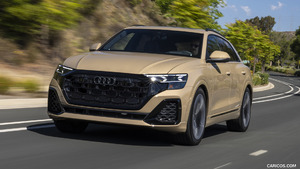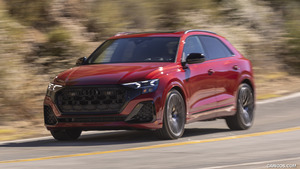Mercedes-Benz VISION AVTR Concept
- Sustainable Luxury: Electromobility in harmony with people and nature
- Organic battery technology: Powerful, flexible and sustainable:
- 100% recyclable by renouncing fossil fuels
- Sovereign performance with full suitability for everyday use
- Maximum efficiency through intelligent operating strategy and solar systems integrated into flaps to supply secondary consumers
On the way to the mobility of the future, Mercedes-Benz is a pioneer going far beyond the purely technical realisation of the automobile from today's point of view. Instead, the company's experts anticipate different perspectives and social trends. With the VISION AVTR, Mercedes-Benz is demonstrating a sustainable vision of zero-emission mobility – also in terms of drive technology.
Extremely confident - and completely without emissions
With its four high-performance and near-wheel-built electric motors, the VISION AVTR embodies a particularly agile implementation of the vision of a dynamic luxury sedan. With a combined engine power of more than 350 kW, the VISION AVTR sets a new benchmark for EQ Power. Thanks to the intelligent and fully variable torque distribution, the power of the four fully individually controllable motors is not only managed in the best possible way in terms of driving dynamics, but above all in a highly efficient manner. The innovative all-wheel drive with torque vectoring enables completely new freedoms and guarantees driving dynamics at the highest level while at the same time providing the best possible active safety. This means that each wheel can be driven separately and depending on the driving situation. Due to the possibility to drive the front and rear axles simultaneously or in opposite ways, the VISION AVTR can move sideways by approx. 30 degrees, in contrast to conventional vehicles. The so-called "crab movement" gives the concept vehicle a reptile-like appearance even in its movement.
Organic battery technology with high energy and flexible structure
The VISION AVTR was designed in line with its innovative electric drive. This is based on a particularly powerful and compact high-voltage battery. For the first time, the revolutionary battery technology is based on graphene-based organic cell chemistry and thus completely eliminates rare, toxic and expensive earths such as metals. Electromobility thus becomes independent of fossil resources. An absolute revolution is also the recyclability by composting, which is 100% recyclable due to the materiality. As a result, Mercedes-Benz underlines the high relevance of a future circular economy in the raw materials sector.
In addition to an exponentially high energy density - compared to today's battery systems with up to 1200 Wh/liter - the technology also impresses with its exceptional fast charging capability via automated, conductive charging technology. This means that the battery will be fully recharging in less than 15 minutes. The innovative technology also allows maximum flexibility with regard to the construction space: With a local minimum of 94 mm, the battery adapts ideally to the shared space vehicle concept, thus maximizing the multifunctional interior. With a capacity of around 110 kWh, the VISION AVTR enables an electric range of more than 700 kilometers. By recuperating during roll-out and braking, the high-voltage battery can be recharged with a higher efficiency than established systems while driving and thus contributes to the high energy efficiency of the overall system.
The real potential of this technology is currently in basic research. All in all, the VISION AVTR marks another important step towards sustainable zero-emission mobility in the luxury class. With the concept car, Mercedes-Benz is showing completely new possibilities to make large and luxurious automobiles marketable and environmentally and socially compatible in the future.
Masterpiece of Effiency
At Mercedes-Benz, the consideration of efficiency goes far beyond the drive concept, because with increasing digitalization, the performance of the large number of so-called secondary consumers also comes into focus – along with their efficient energy supply, without negatively affect the drive power of the vehicle itself. Energy consumption per computing operation is already a key target in the development of new computer chips. This trend will continue in the coming years with the growth of sensors and artificial intelligence in the automotive industry. The neuro-inspired approach of the VISION AVTR, including so-called neuromorphic hardware, promises to minimize the energy requirements of sensors, chips and other components to a few watts. Their energy supply is provided by the cached current of the integrated solar plates on the back of the VISION AVTR. The 33 multi-directionally movable surface elements act as "bionic flaps".
"Giving Back the City" - Vehicle to Grid
Thanks to The Vehicle to Grid function, the VISION AVTR fits seamlessly into the future, electromobile ecosystem by bringing energy back to the public from its highly efficient batteries and controlled by its artificial intelligence when needed.
Technical data:
| CO2 emissions | 0 g/km |
| Range (WLTP) | over 700 km |
| Performance | over 350 kW |
| Battery | 110 kWh |
| Drive | All-wheel drive (fully variable) with torque vectoring |
Interior Design
Despite its revolutionary approaches, the VISION AVTR follows the design language of the EQ product and technology brand: Beauty coupled with digital elements creates tension, technologies of the distant future underline the progressive luxurious design language.
Interior and exterior merge
For the first time, Mercedes-Benz has worked with a completely new design approach in the design of the VISION AVTR. The holistic concept combines the design disciplines interior, exterior and UX from the first sketch. Man and human perception are the starting point of a design process from the inside out. The design process begins with the experience of the passengers and consciously focuses on the perception and needs of the passengers. The goal was to create a car that prolongs the perception of its passengers. It was also a matter of creating an immersive experience space in which passengers connect with each other, with the vehicle and the surrounding area in a unique way.
The distinctive inside-out design structure of the VISION AVTR combines the interior and exterior to create an emotional whole. The lateral opening of the outer line runs through the interior and creates a very generous loop structure, which is inspired by the connection between the Na'vi in AVATAR and their natural environment on Pandora. As a result, there is only one line for the viewer that never stops. With its novel, stretched "One Bow" design and clear organic design language, the VISION AVTR shows the next stage of vehicle design. From mindful perception to perfect adaptation to the fusion of human and machine as used in VISION AVTR with the control unit. The senses of the passengers merge not only with the vehicle, but also with the outside world.
Inspired by Mother Nature
Nature serves as the main source of inspiration for the interior of the VISION AVTR: The entire structure is designed from one line and takes on organic shapes. Flower-like and softly woven elements of the interior contrast with dynamic contours. Light strips in the seats find their optical extension in projections on the center console.
The interior is enlivened with energy lines and rich real-time graphics. The user experience comes into focus. The user experience as a central element of the VISION AVTR is comparable to a symbiotic organism. As soon as the passengers board and take a seat, they merge with the vehicle and can literally feel the world around them and experience it even more consciously. Technical and functional elements can be operated intuitively. This vehicle has no visible buttons or switches, functions are projected onto the body or hand of the driver or the passenger – a new level of human-machine fusion. The technology is only visible when the driver really needs it and wants to use it. The dashboard design underlines this nature experience with an atmospheric and luminous look.
Flowing lines
Inspired by the connection of the Na'vi in with aspects of their natural world, the Mercedes-Benz designers have created an outer line that spirals through the interior. In the vehicle side, the VISION AVTR becomes an inside-out sculpture through a large oval opening: The interior and exterior are visually connected, from the neck support, through the door opening to the sill. This spiral also includes the rear seats and encloses the passengers on the rear benches. A single line winds from here to the front to the headrest of the passenger.
The front seat, in its very organic form, is reminiscent of the leaf hammocks in Home Tree shown in the first AVATAR film; the impulses provided by the seat make driving a holistic experience. The center console symbolizes the Tree of Souls, the most sacred place of the Na'vi. It extends to the A-pillar and creates its roof structure, which gently encloses the passengers in the back seat like a cocoon. The headrests of the special child seats also extend so far forward that it simultaneously develops into the headrest of the front seats.
The A-pillar consists of several different tinted parts, the colors of which blend seamlessly. Their surfaces are transparent to varying degrees. This creates a magic hologram effect in the main projection area.
The control unit is the intuitive heart of the vehicle. It is seamlessly integrated into the central tunnel and encompasses both driver and passenger, and then continues into the rear seats. The merge between human and machine happens by placing the hand on the center console: the interior comes to life and the vehicle recognizes the driver by his breathing. This is made visible on the instrument panel and the user's hand. Thus, the VISION AVTR establishes a close biometric connection with the driver and increases his awareness of the environment. The digital neurons flow from the interior into the exterior and visualize the energy exchange from symbiosis between driver and vehicle.
The analogue and digital worlds merge
The material concept of the entire vehicle aims at a fusion of the analogue and digital world and focuses on an elementary core: sustainability. The VISION AVTR combines futuristic technology with ecology and high attractiveness and shows what a natural interior of the future could look like. The company consistently relies on traditional and technologically groundbreaking vegan or ecological surfaces and their underlying materials. Technical structures combined with warm and haptically soft materials create contrasts and thus tension in materiality. The VISION AVTR impresses with a silver surface in the exterior. This contrasts with the design language of the product and technology brand EQ using warm rose gold as an accent in the woodsprite wheels and subtly in the interior. The focus in the elegant technoid cockpit is on the large UX surface. By using several white, semi-transparent planes, an extreme depth of the projection can be displayed here.
Sustainable materials for a luxurious and sustainable ambience in the VISION AVTR interior
Large areas such as the back shell of the seat and the sky are decorated with a colour-changing fabric inspired by the colour world of the sea. Depending on the light, the textile changes its color from dark blue to a subtle light blue. These seats are refined by the vegan DINAMICA®leather. DINAMICA® is the first and only microfiber that guarantees environmental sustainability throughout the entire production cycle. It is recycled material made from old clothing, flags and PET plastic bottles. During production, attention is paid to low pollutant emissions and low energy consumption. Thanks to its versatility, maximum performance and high quality, DINAMICA is® suitable for use in luxurious car interiors. It also guarantees slip resistance for passengers on the seats. The softness of the material gives the occupants a "welcome home" feeling.
On the crystal white DINAMICA® is printed an abstract leaf graphic with a subtle gradient. It visually strengthens the connection to nature once again. The floor is decorated with an innovative wood called Karuun®. The material gives the interior warmth and radiates naturalness. The combination of technical and natural materials creates a pleasant indoor climate.
Karuun goes back to the Indonesian official and national language Bahasa Indonesia and is called "hidden treasure". The raw material for Karuun® (Rattan) comes from Indonesia. Rattan grows very fast and has significant advantages in cultivation over other types of wood or non-wood products. Rattan depends on biodiversity and cannot thrive in a monoculture. Therefore, the active support of its cultivation contributes to the protection of the planet's rainforests and ensures a sustainable income for the local population. A natural feature of the plant is the symbiosis with the surrounding trees. Rattan needs the rainforest to thrive. As a natural raw material, rattan grows very quickly and is usually harvested by hand by local farmers – in an environmentally friendly way.
The UX design – intuitive interaction
The UX designers from Mercedes-Benz shape the relationship between human and machine and vice versa. The focus is on the simplest and most intuitive operation by the user. An important motive is the self-determination of the user and the approach to use the entire interior for information. The goal is to display the right information at the right time – and only as long as it is actually needed.
In the VISION AVTR, the Mercedes-Benz UX designers focus on the user experience in a completely new way. Inspired by the fictional world of Pandora from AVATAR, the VISION AVTR enables a previously unknown symbiosis of human, vehicle and surroundings. The result: a visionary vehicle that expands the senses of the occupants and increases their perceptual ability. As soon as the passengers take their seats in the VISION AVTR, they merge with the vehicle and can virtually feel and perceive the world around them even more consciously.
Intuitive control
The VISION AVTR already responds to the approach of the passengers by visualizing the energy and information flow of the environment with digital neurons that flow through the grill through the wheels to the rear area. The first interaction in the interior between man and vehicle happens completely intuitively via the control unit: By placing the hand on the center console, the interior comes to life and the vehicle recognizes the driver by his breathing. This is made visible on the instrument panel and on the user's hand. The VISION AVTR thus establishes a biometric connection with the driver and increases his awareness of the environment. The digital neurons flow from the interior into the exterior and visualize the flow of energy and information. For example, when driving, the neurons flow over the outside of the vehicle. When changing direction, the energy flows to the corresponding side of the vehicle.
The control unit is a multifunctional (polyvalent) interface that allows human and machine to merge. It is also used to control the VISION AVTR, either by the driver's or the passenger’s seat. The device can be raised or lowered by a short tap if necessary – so the control unit is only visible when it is needed. Depending on the mood and vitality of the driver, the car offers different driving options: In comfort mode, the vehicle is autonomous. Optionally, the control unit is driven up to half, so that the driver can influence the speed. If the driver wants to have full control of the vehicle, the control unit can be completely lifted for steering.
The vehicle as an immersive experience space
The visual connection between passengers and the outside world is created by the curved display module, which replaces a conventional dashboard. The outside world around the vehicle and the surrounding area is shown in real-time 3D graphics and at the same time shows what is happening on the road in front of the vehicle. Combined with energy lines, these detailed real-time images bring the interior to life and allow passengers to discover and interact with the environment in a natural way with different views of the outside world. Three wonders of nature – the Huangshan Mountains of China, the 115-meter-high Hyperion Tree found in the United States and the pink salt Lake Hillier from Australia – can be explored in detail. Passengers become aware of various forces of nature that are not normally visible to the human eye, such as magnetic fields, bioenergy or ultraviolet light.
In the VISION AVTR, the interface adapts to the user – and not the other way around. By simply lifting the hand, an interface is projected onto the palm of the hand, allowing passengers to interact intuitively with the interior of the VISION AVTR. For example, through simple gestures, passengers choose the right ambient soundtrack or between different immersive experiences. This allows the world of Pandora to be explored within the VISION AVTR. In the process, one's own perspective merges with that of a banshee or a direhorse and the occupant experiences a flight or run through the Pandoran forest.
Extension of the senses through vibration and sound
The seats make the surroundings around the vehicle experienceable through haptic feedback. Vibrations adapted to the situation transmit information in a non-visual way and make objects noticeable. Each seat has eight exciters. These create vibrations that make the occupants feel the outside world or their own pulse. Supported by realistic 360-degree sound, reality and fiction merge into a unique experience. Lifelike sounds perfectly matched to the different situations let the passengers experience their surroundings directly. Due to the spatial 3D sound, a sound source can be precisely localized as in the wild. Completely intuitively, the user recognizes on which side of the vehicle, for example, a stream flows by or where bird voices sound. Instead of shielding the occupants from the outside world, the VISION AVTR brings the environment into the vehicle and strengthens the bond between human and nature.
Family in focus
The VISION AVTR automatically detects when a family is on board and adapts accordingly in its functions. For example, the front seats are connected to the rear seat via the Child Connect function. Monitors can be used to monitor the well-being of the children in the rear by the parents at the front. As a further connection between the front seats and the rear, the pulse of the front passengers on the back of their seats is visualized by light. This gives younger inmates in particular a sense of connectedness and security in the rear seats.
The so-called Magic Pool is integrated into the back of the front seats and offers learning-oriented gaming and a child-friendly augmented reality experience of the surroundings for the passengers in the rear. Interesting points along the route, such as mountains, rivers or sights, are presented informatively and age-appropriately.
The exterior – bionic formal language
When the boundaries between vehicle and living beings are lifted Mercedes-Benz combines luxury and sustainability and works to make the vehicles as resource-saving as possible. With the VISION AVTR, the brand is now showing how a vehicle can blend harmoniously into its environment and communicate with it. In the ecosystem of the future, the ultimate luxury is the fusion of human and nature with the help of technology. The VISION AVTR is thus an example of sustainable luxury in the field of design. As soon as you get in, the car becomes an extension of your own body and a tool to discover the environment much as in the film humans can use avatars to extend and expand their abilities.
A bionic, nature-inspired formal language characterizes the appearance of the VISION AVTR. This sensual, innovative design with the EQ-typical "seamless" design language makes the concept an exceptionally sculptural vehicle vision. The stretched, sporty "one-bow" body merges with powerful, spherically pronounced wheelhouses. The VISION AVTR becomes an inside-out sculpture through a large oval opening: the spiral movement connects the interior inseparably with the exterior, coming from the neck support, over the door opening to the sill.
Holistic fusion of the outside and the inside
The transparent door shells support the impression of lightness and efficiency of the bionic-looking vehicle body. At the same time, they open up the view of the interior and thus underline the holistic design approach: the fusion of exterior, interior and UX. All transparent surfaces are framed with the highest precision by an ornamental serigraphy. The spectacular opening and closing of the doors is inspired by the wings of a banshee or ikran, the flying mounts of the Na'vi from AVATAR.
The VISION AVTR impresses with a fluent-looking silver surface, as well as the bluish luminous accents, such as in the EQ-typical front mask. In contrast, there is the warm rose gold of the expressive rim arms, which is also characteristic of the design language of the product and technology brand EQ. The impression of a animated object is reinforced in the exterior by light stagings. Pulsating fiber optics penetrate the front, side and stern like nerve pathways, connect the exterior with the interior and also make energy and information flows visible in the wheels. In addition, their aesthetics are reminiscent of the bioluminescence of nocturnal nature on Pandora, where many living beings and plants can glow at night.
Communication and interaction with the environment
The car becomes an active part of its environment: 33 multi-directionally movable surface elements on the back of the vehicle enable a completely new interaction of the VISION AVTR with its surroundings. These "bionic flaps" are reminiscent of several Pandoran animals and communicate through naturally flowing movements in subtle gestures. Both the "bionic flaps" and the neural light lines react to the approach from the outside and also reflect – by connecting with the driver – the emotions and activities of the occupants. Natural energy flows visibly through the vehicle. The "bionic flaps" change their orientation in unison in order to optimally support the vehicle during manoeuvres and to express the connection between human and vehicle also in the exterior. In addition, they can be used as solar panels.
Naturally dynamic: Wheels inspired by seeds of the sacred tree
The Mercedes-Benz designers used the woodsprites, the seeds of the Tree of Souls from AVATAR as inspiration for the design of the wheels. The wheels of VISION AVTR embody the intelligence of nature. The treads and the illuminated rim arms merge into a completely new wheel sculpture that looks like it has grown organically. The six organic-looking segments of the rim are interspersed with blue light guides. Due to their almost spherical shape, the wheels enable the VISION AVTR to experience new driving movements as well as a small turning circle and minimize the contact surface of the tyres with the substrate. All four wheels of the vehicle can change direction. In combination with the axis arrangement of the VISION AVTR, it is possible to move the vehicle not only forwards and backwards, but also diagonally. As a result, the VISION AVTR achieves extremely high agility and the so-called "crab movement" gives the concept vehicle an animal-like appearance even in its movement.

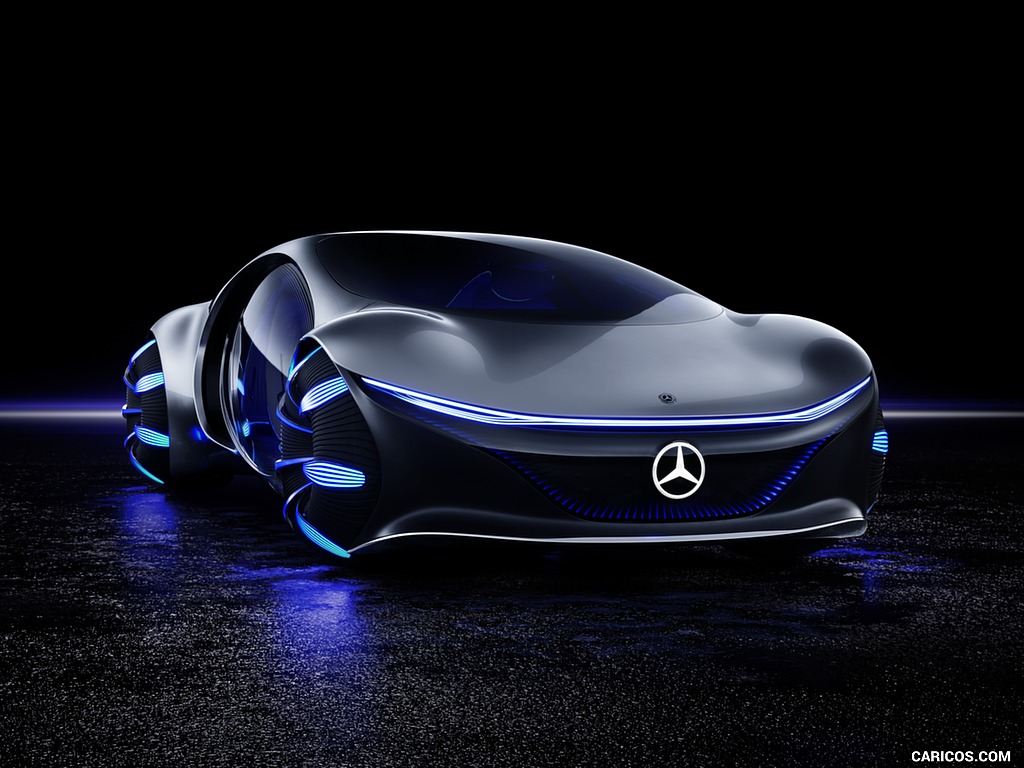 \n
\n
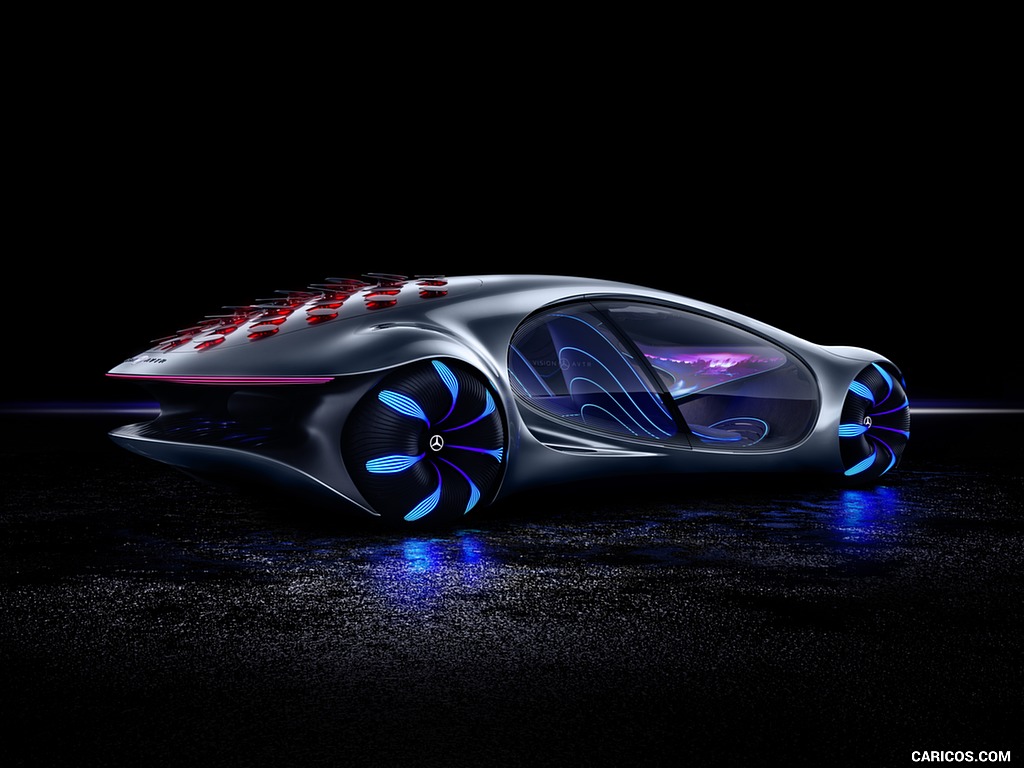 \n
\n
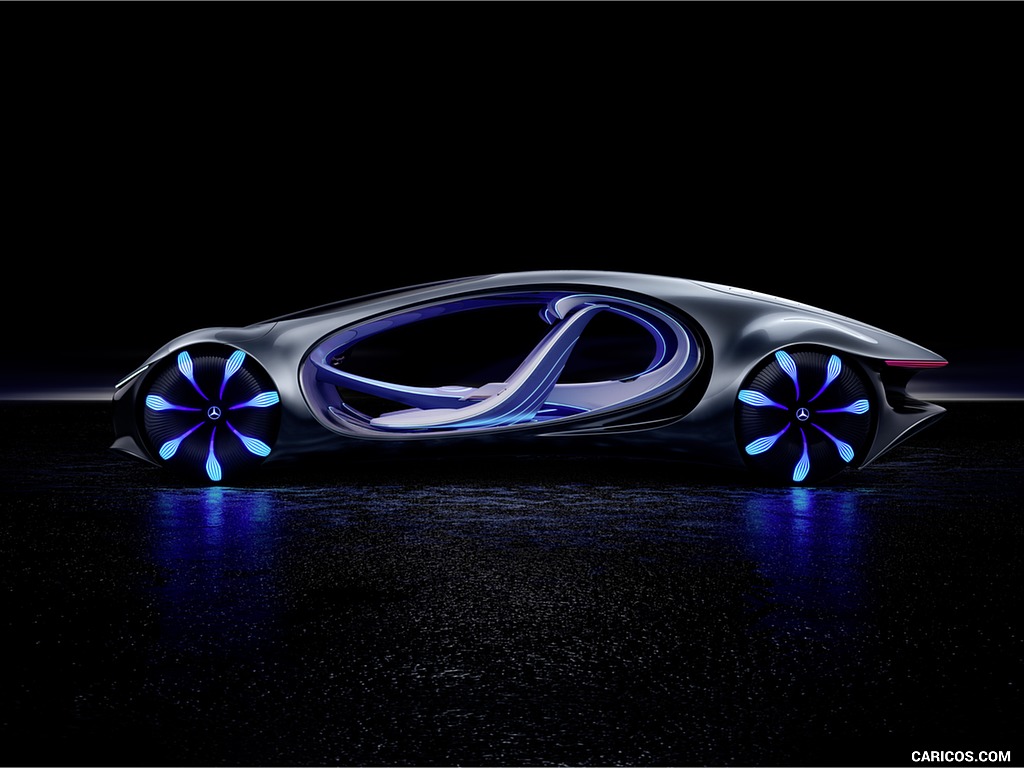 \n
\n
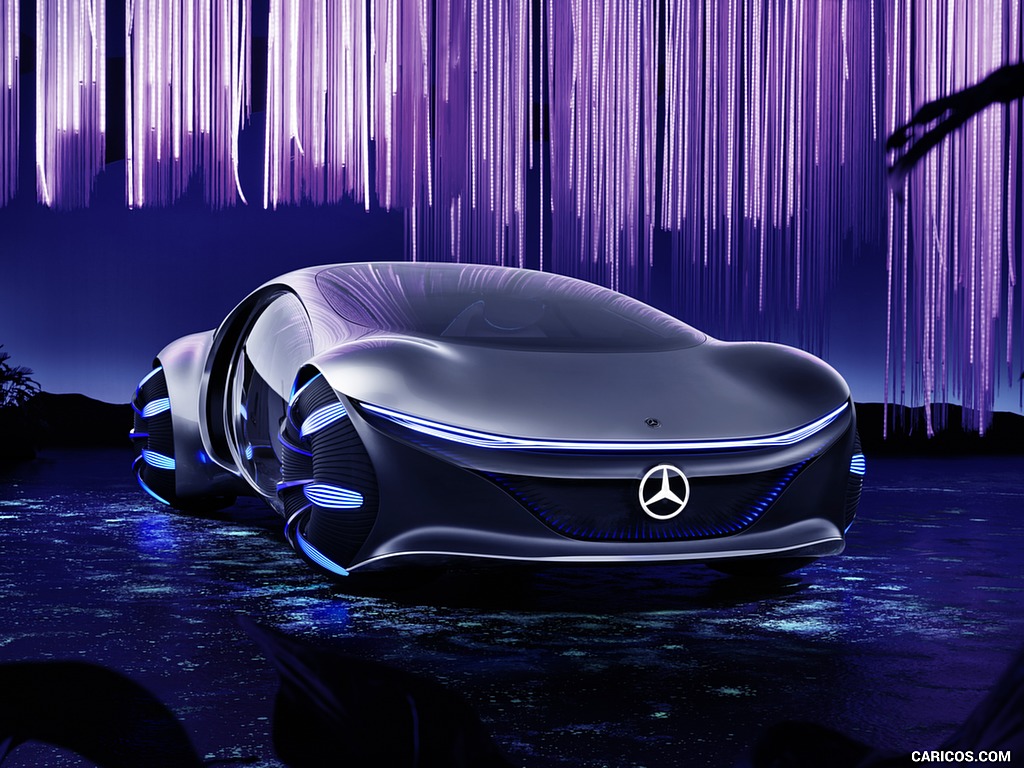 \n
\n
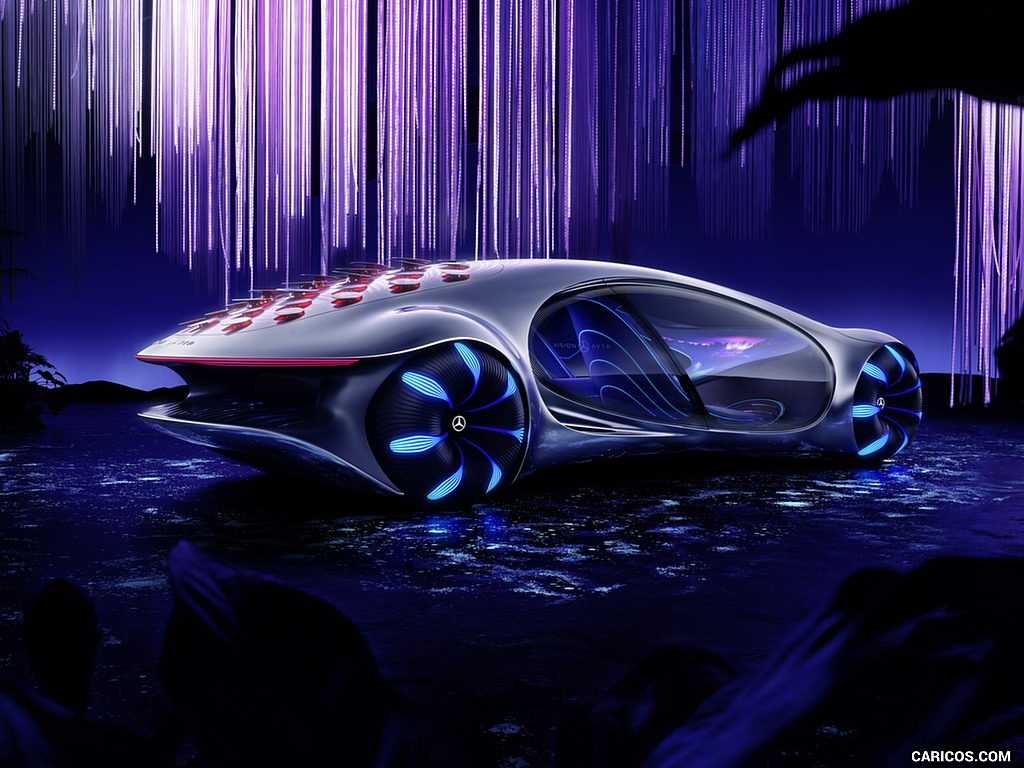 \n
\n
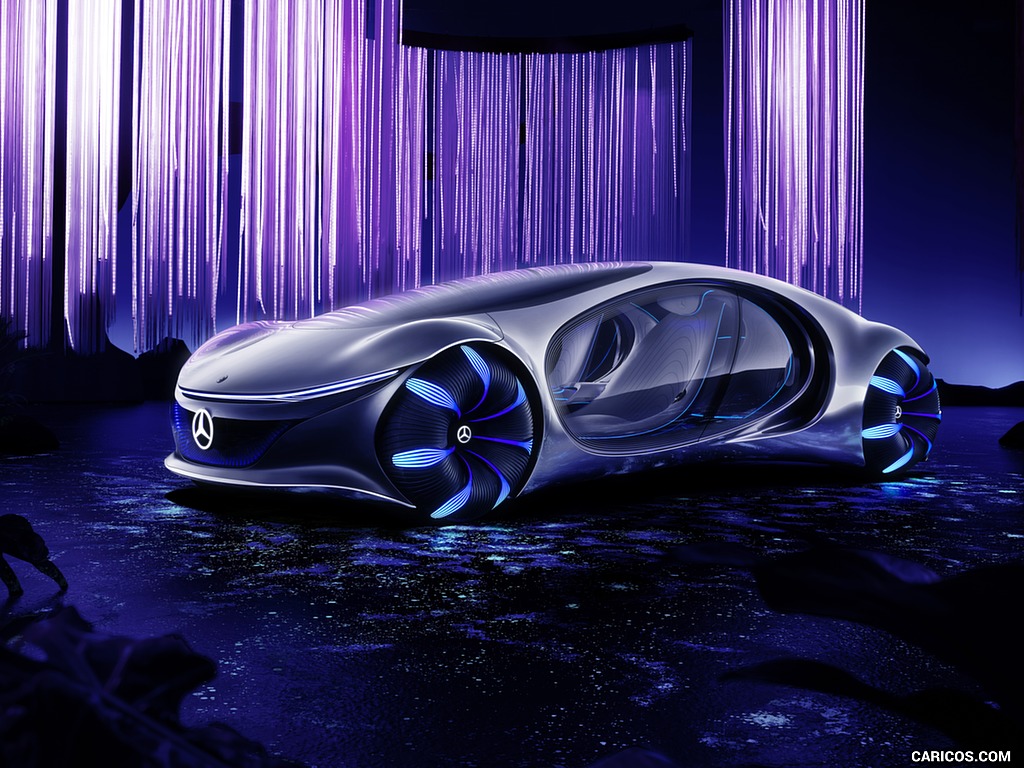 \n
\n
 \n
\n
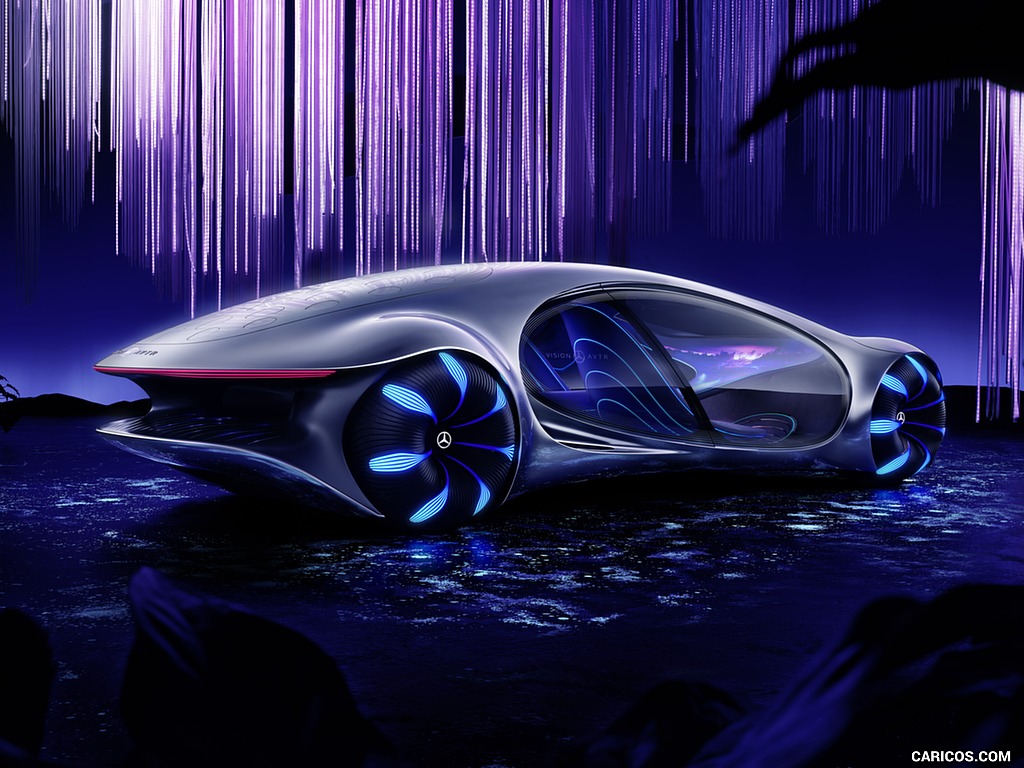 \n
\n
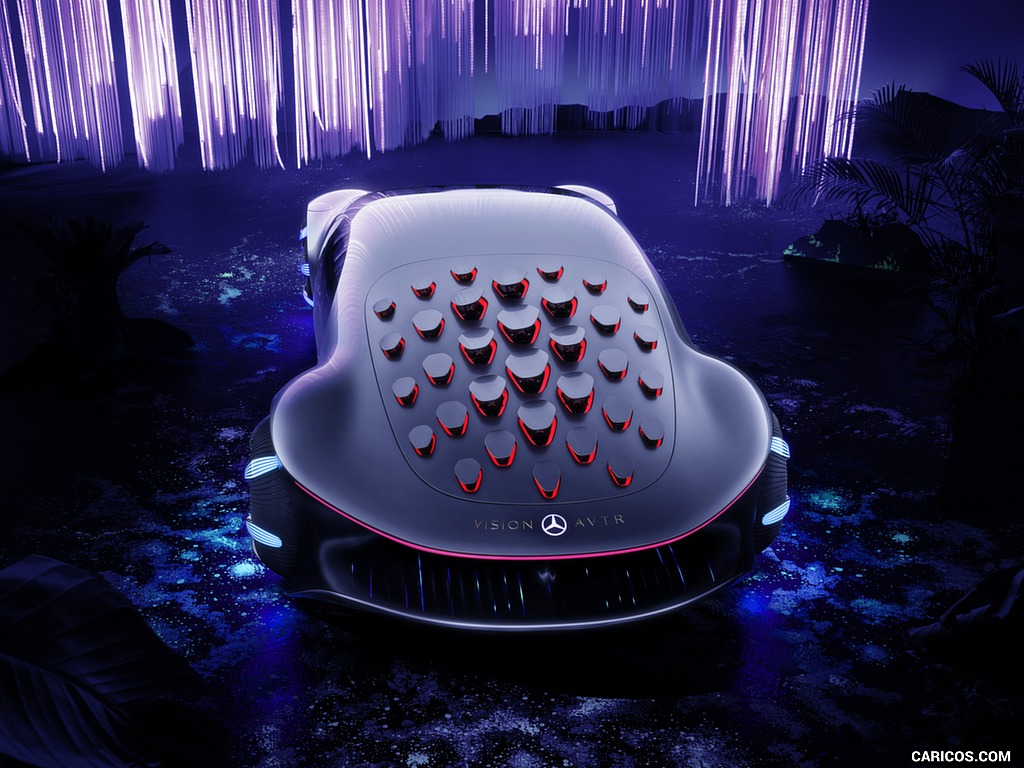 \n
\n
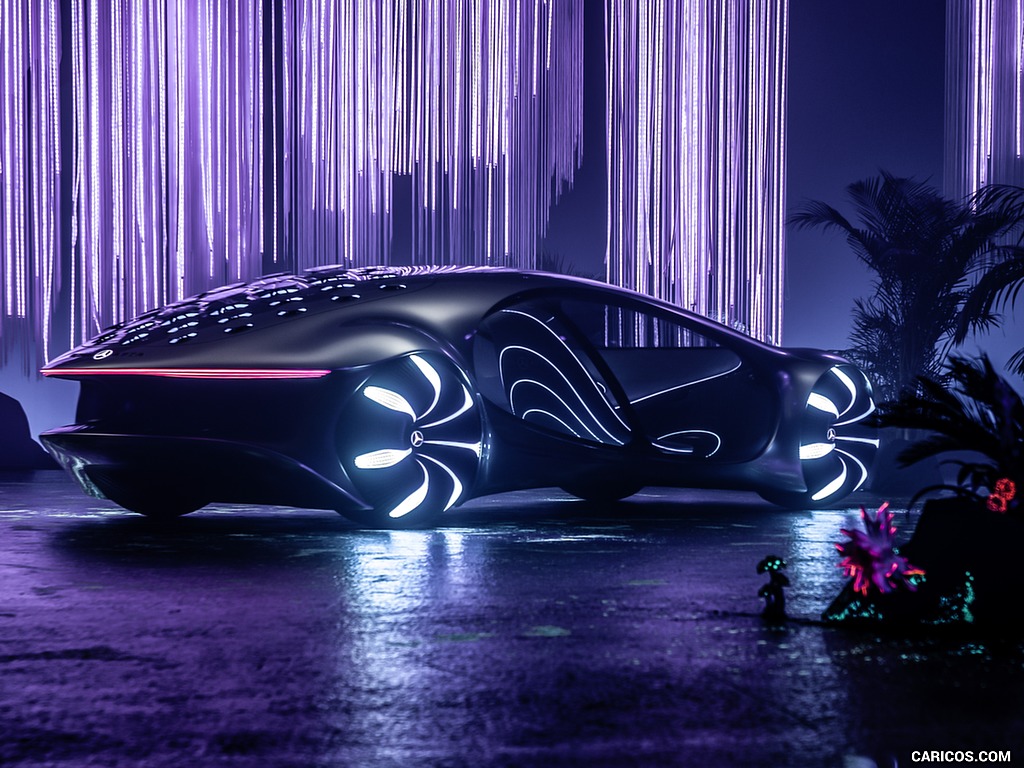 \n
\n
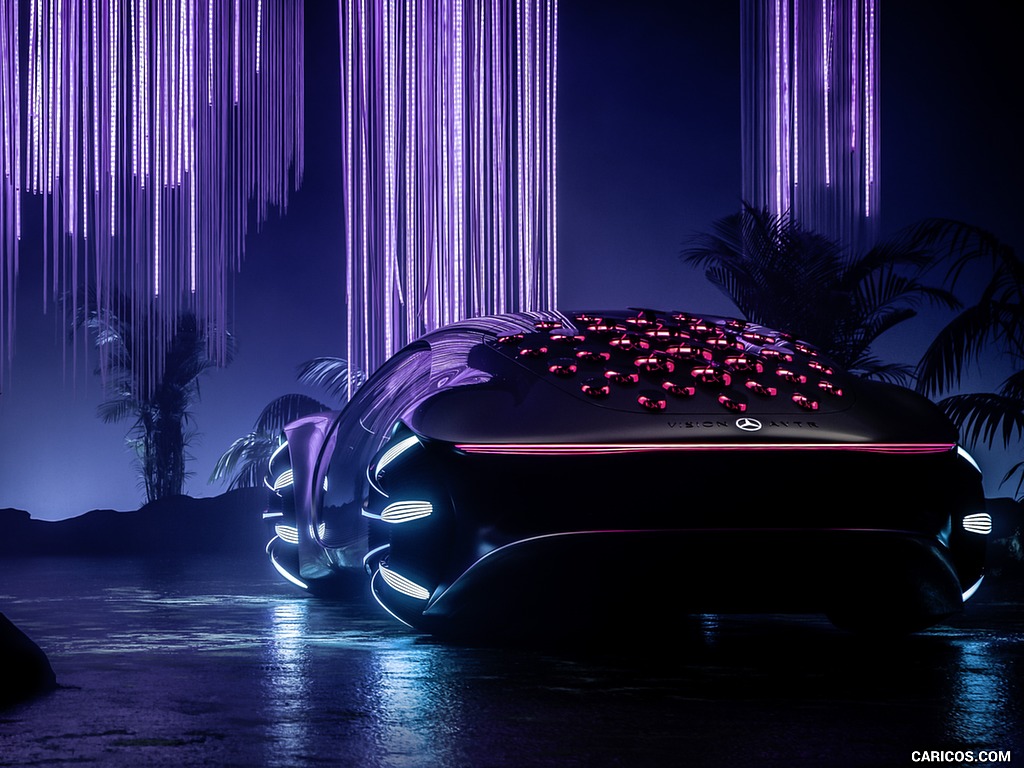 \n
\n
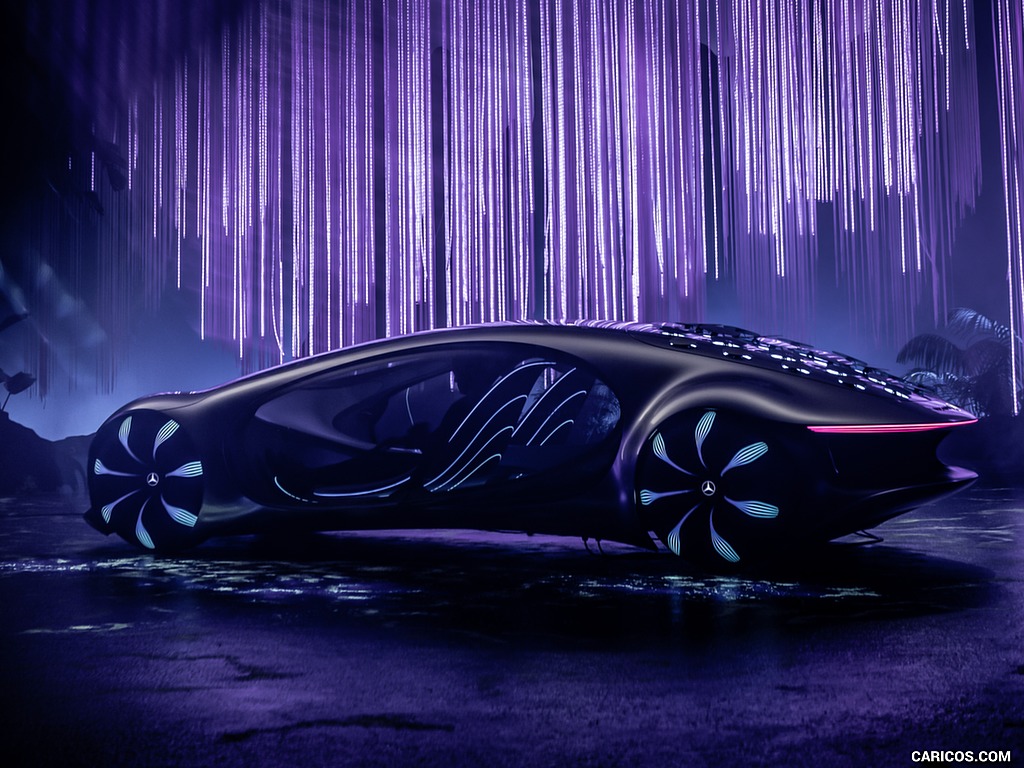 \n
\n
 \n
\n
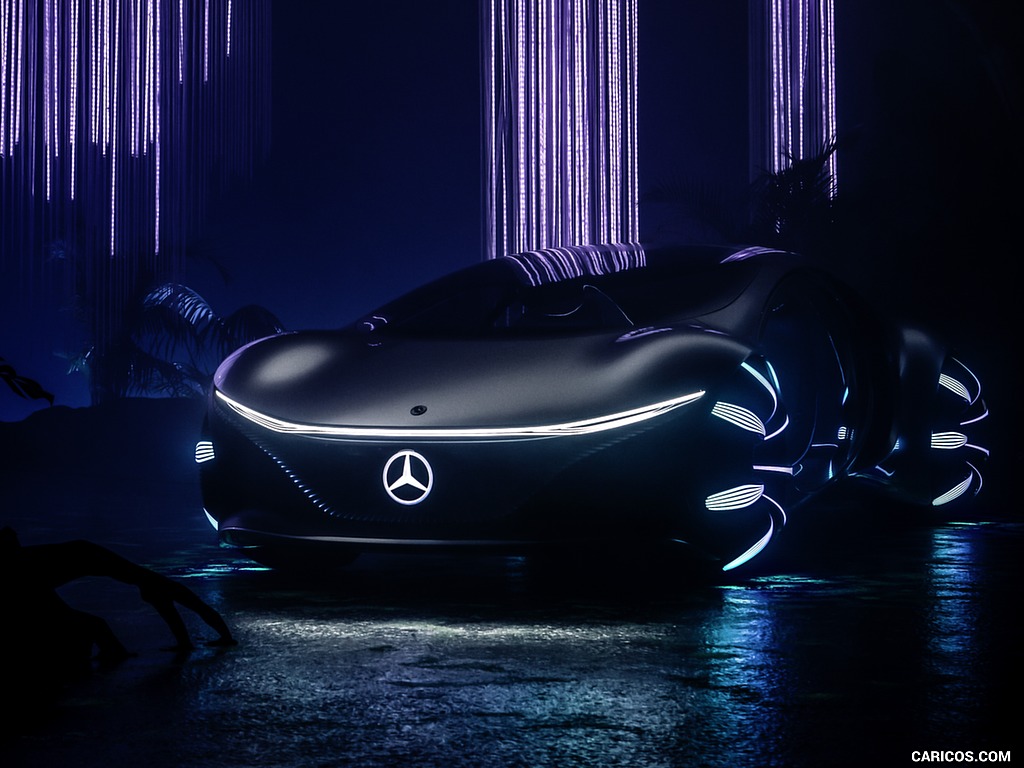 \n
\n
 \n
\n
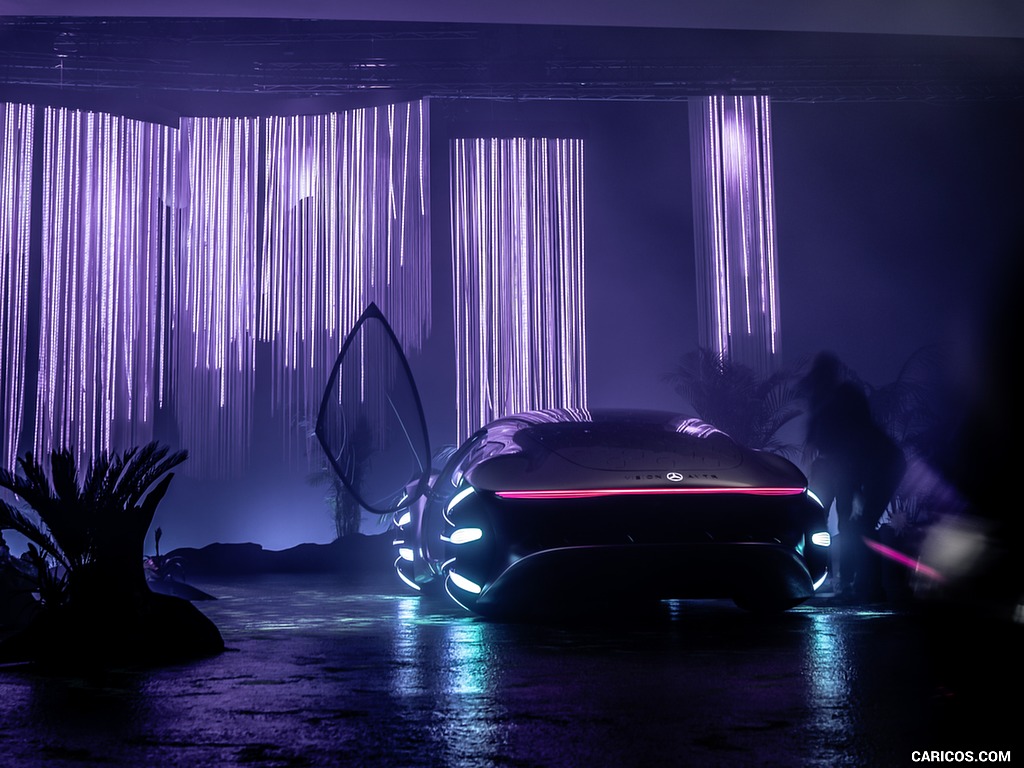 \n
\n
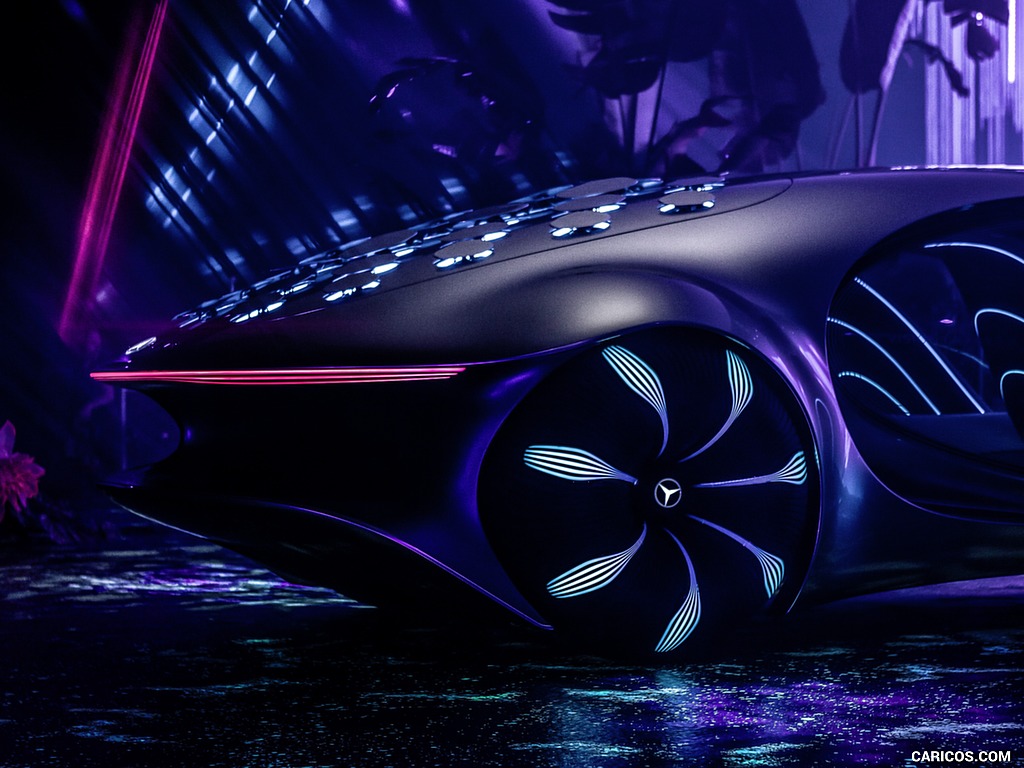 \n
\n
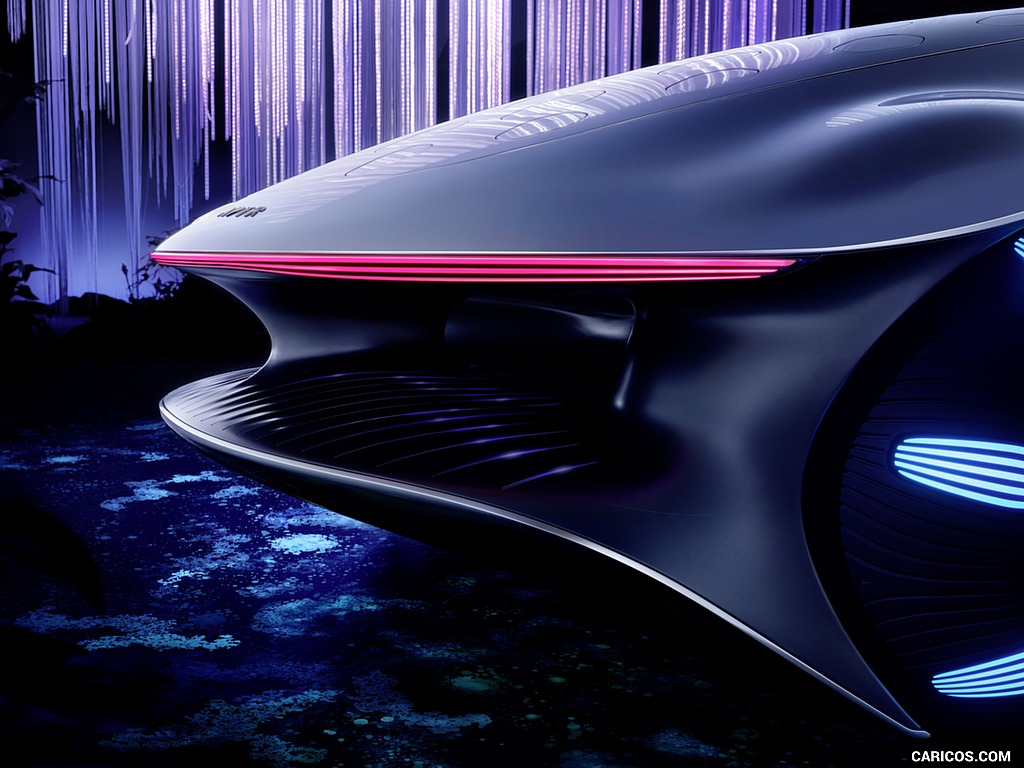 \n
\n
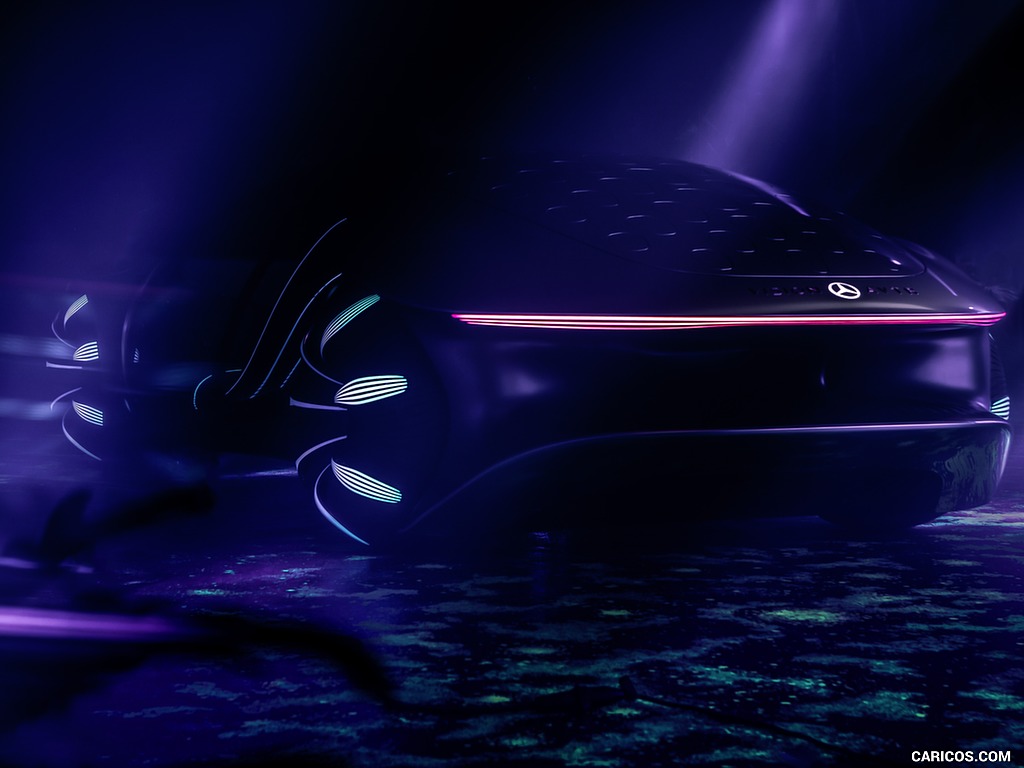 \n
\n
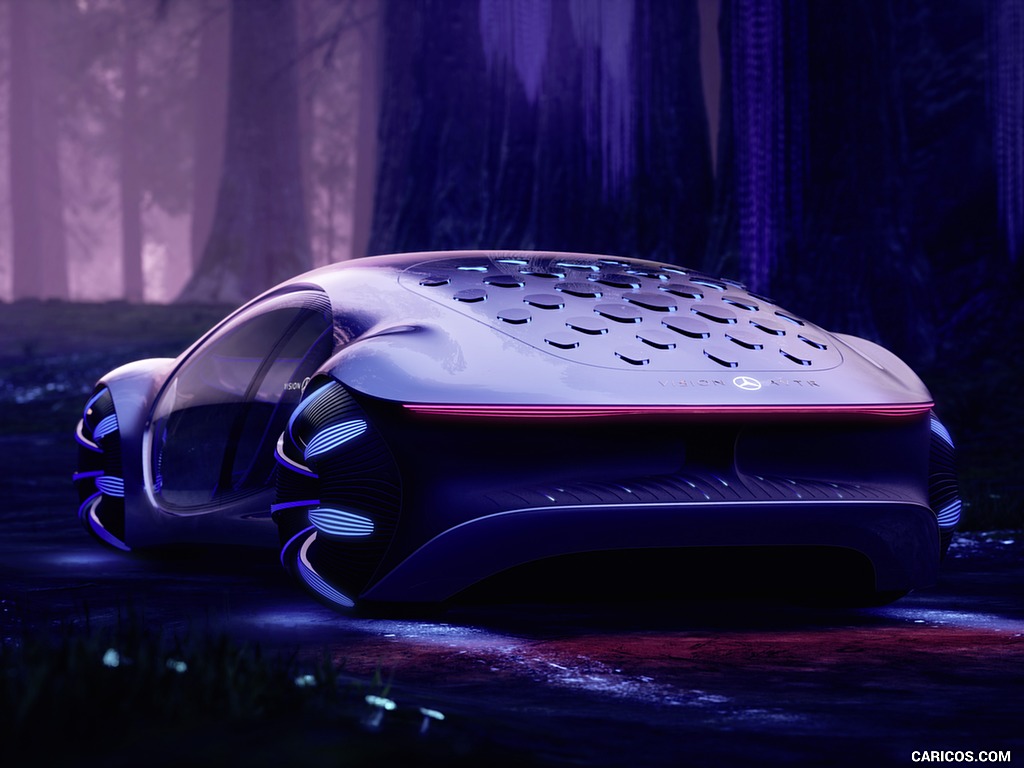 \n
\n
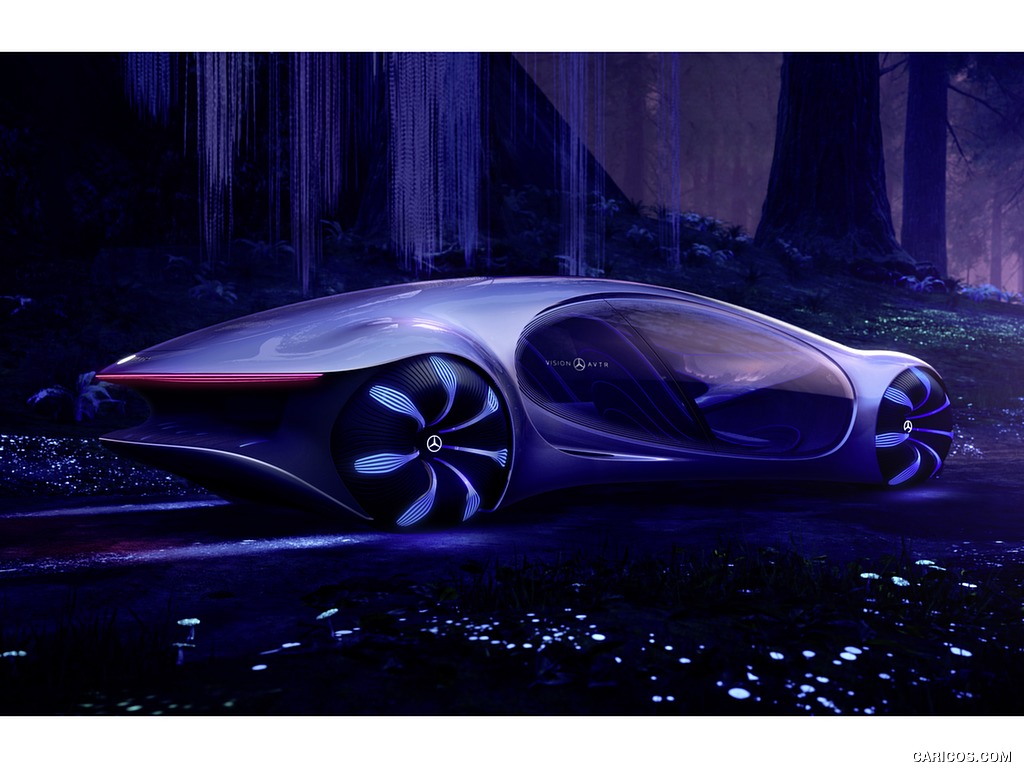 \n
\n
 \n
\n
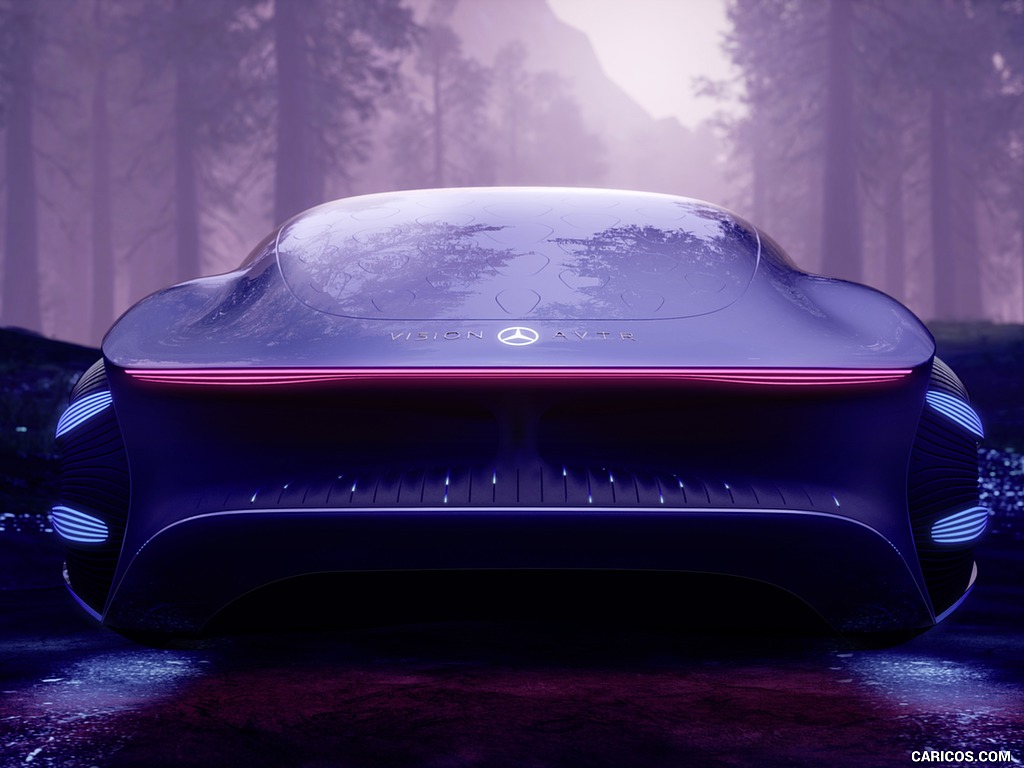 \n
\n
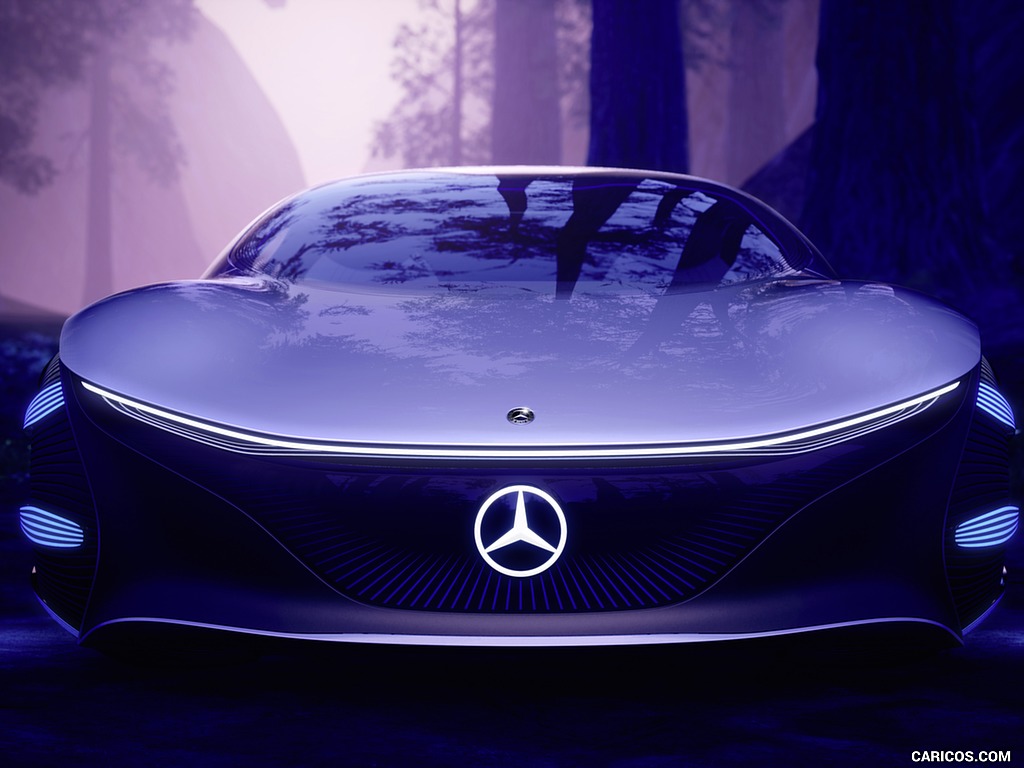 \n
\n
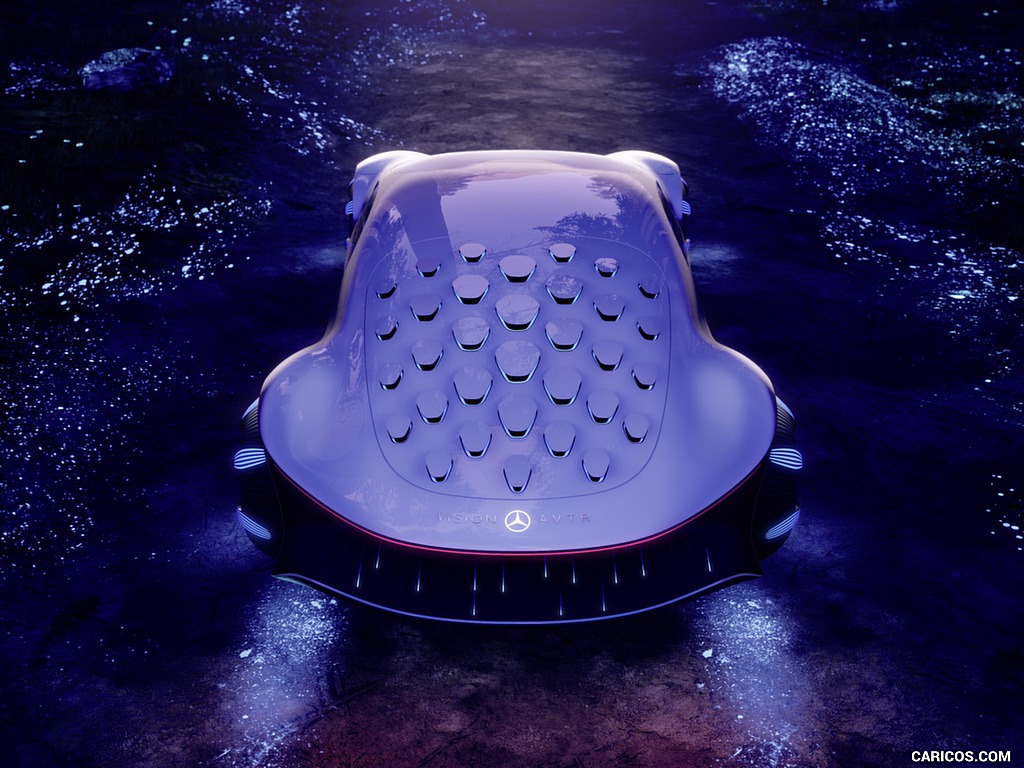 \n
\n
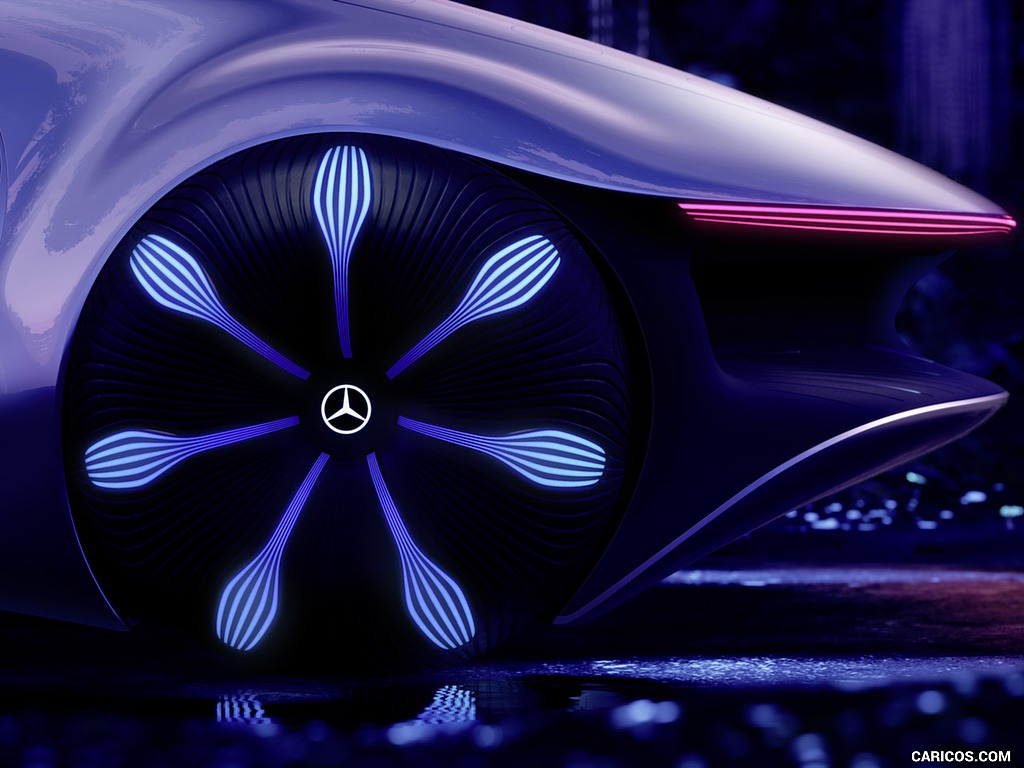 \n
\n
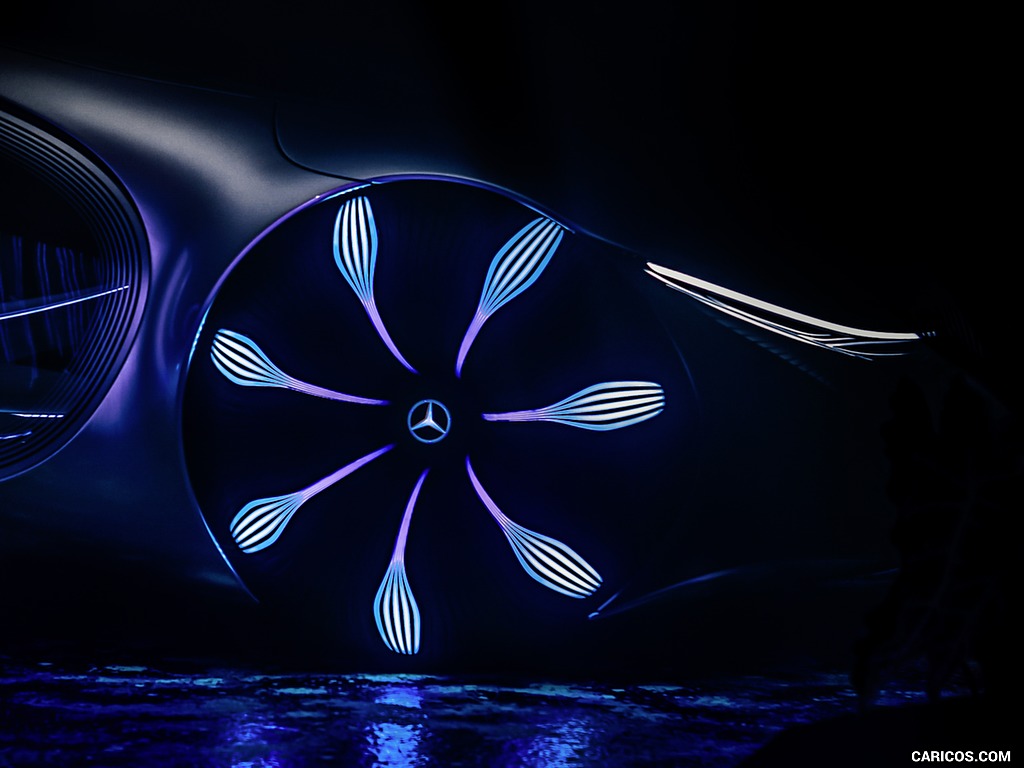 \n
\n
 \n
\n
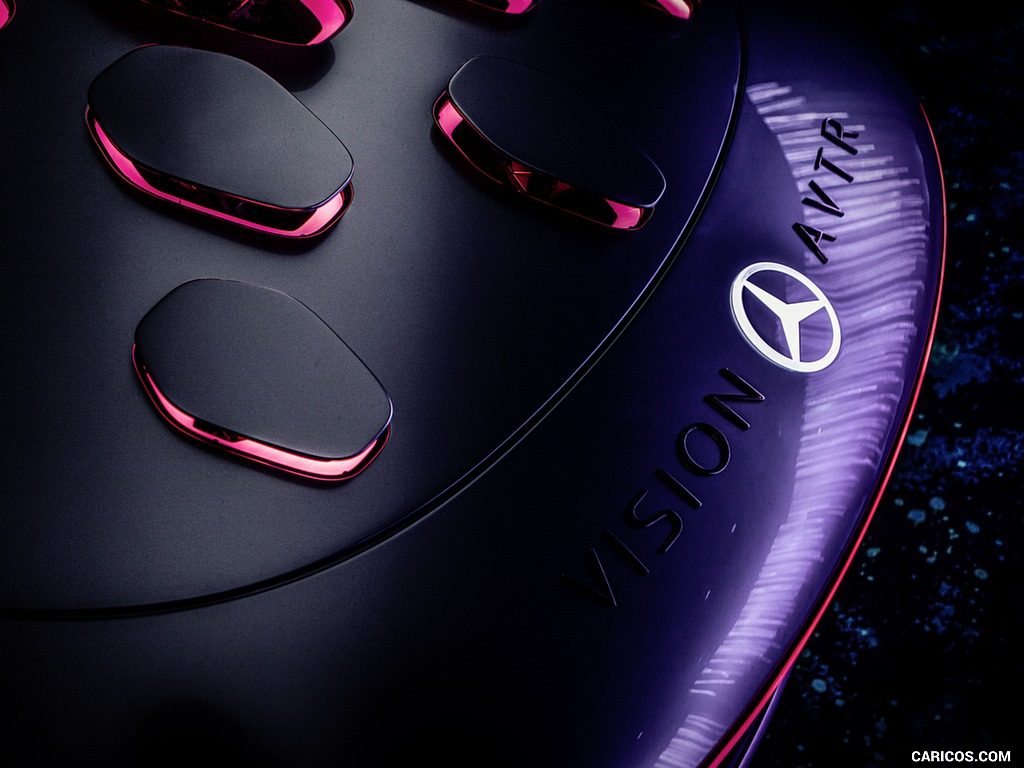 \n
\n
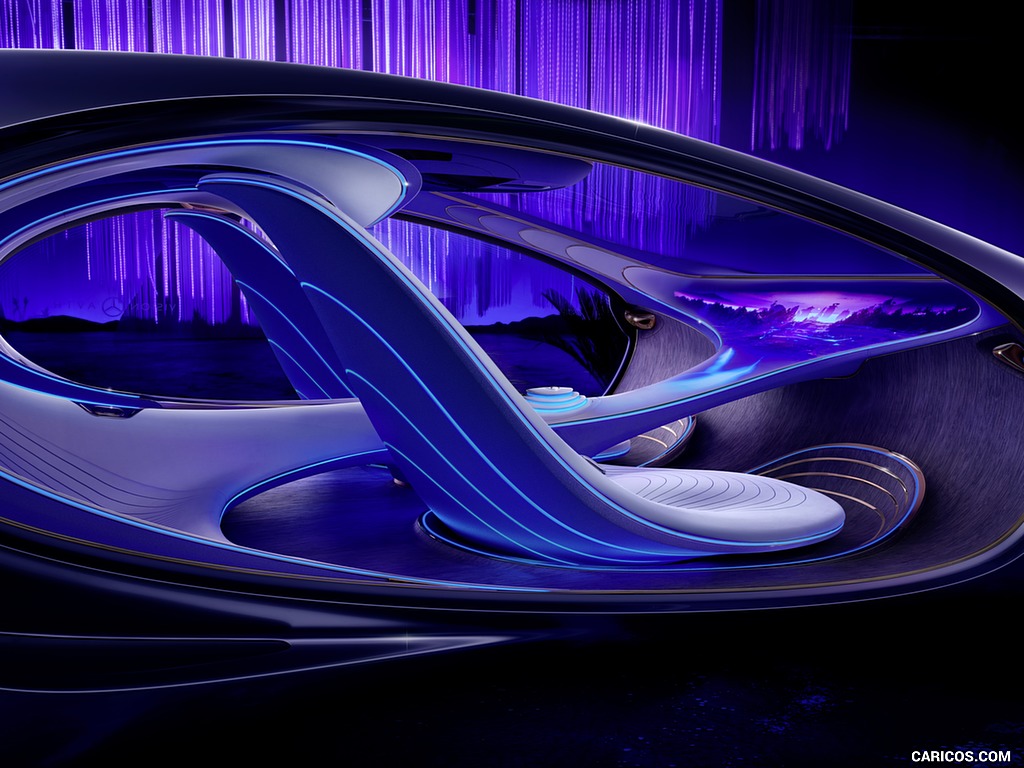 \n
\n
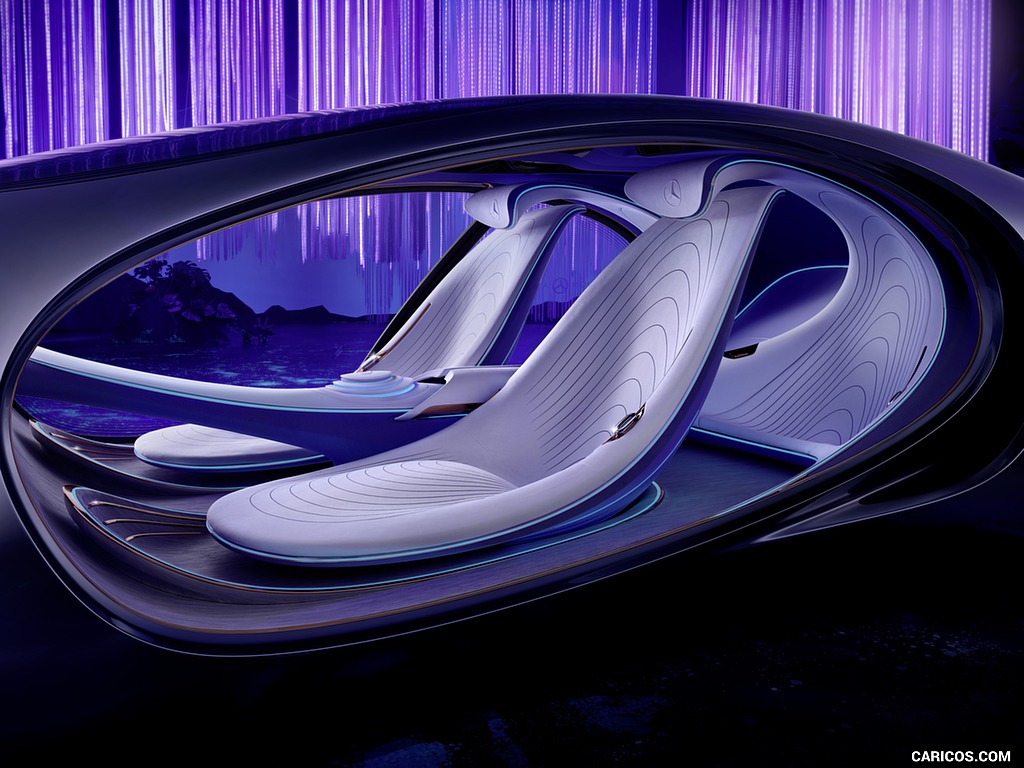 \n
\n
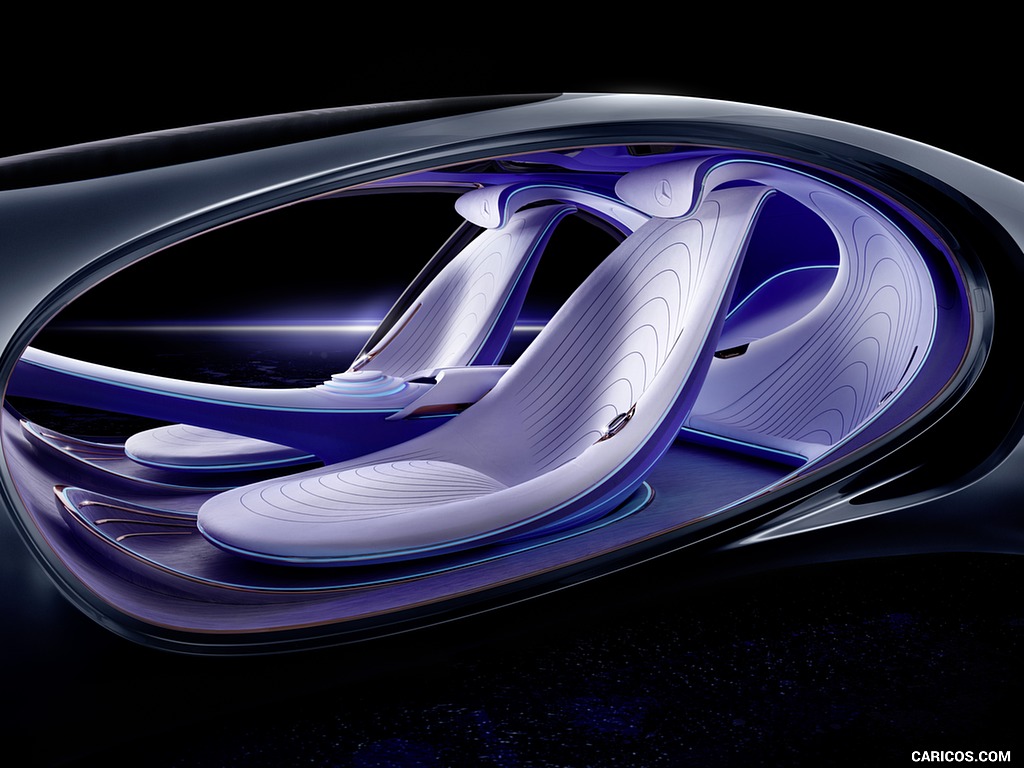 \n
\n
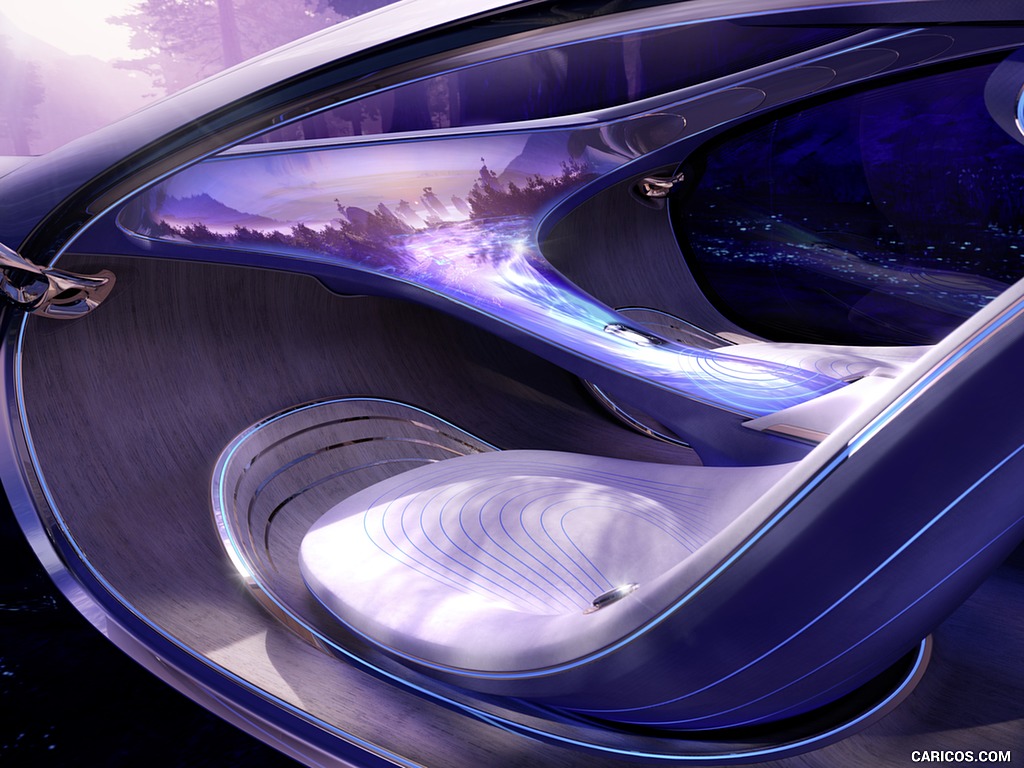 \n
\n
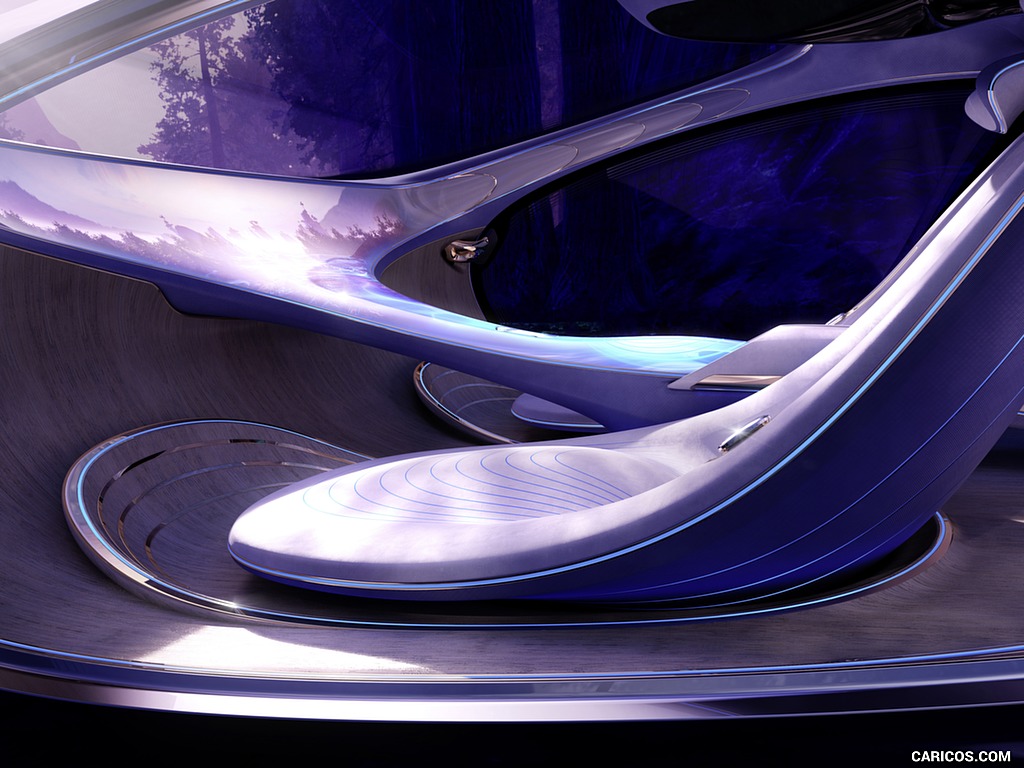 \n
\n
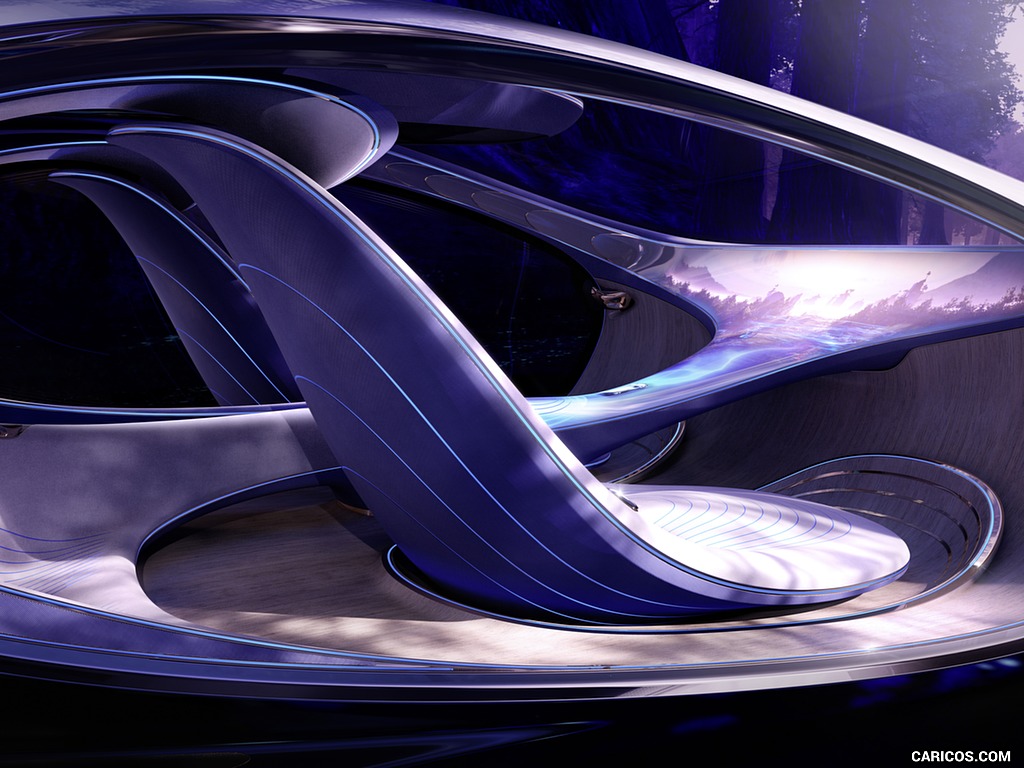 \n
\n
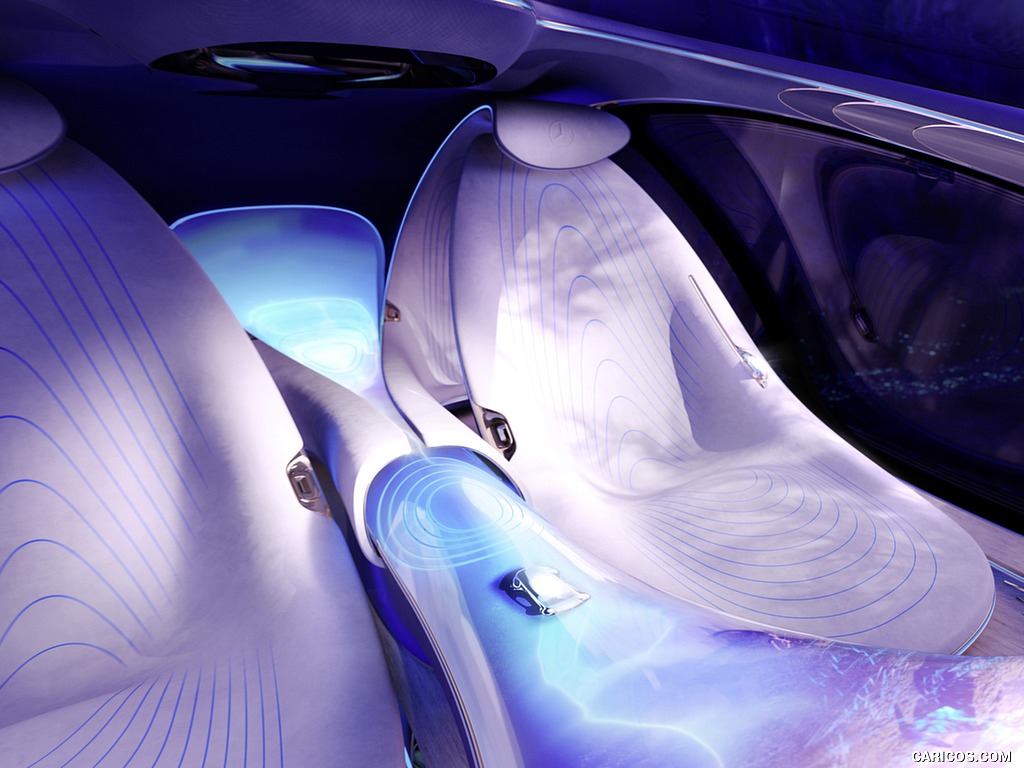 \n
\n
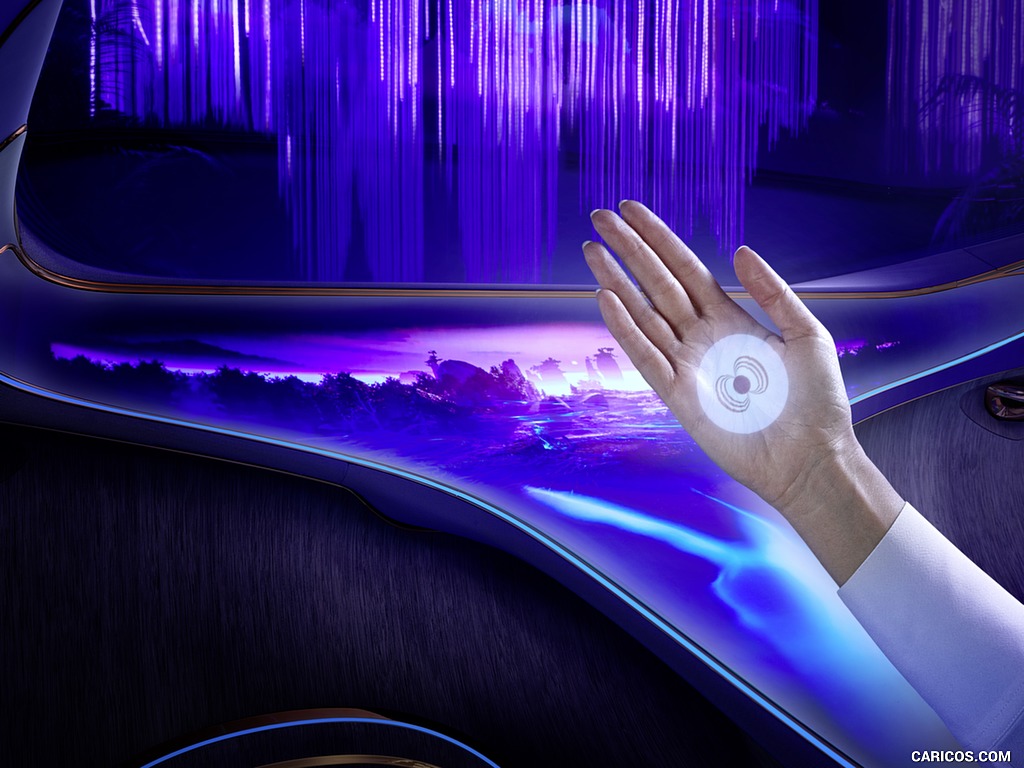 \n
\n
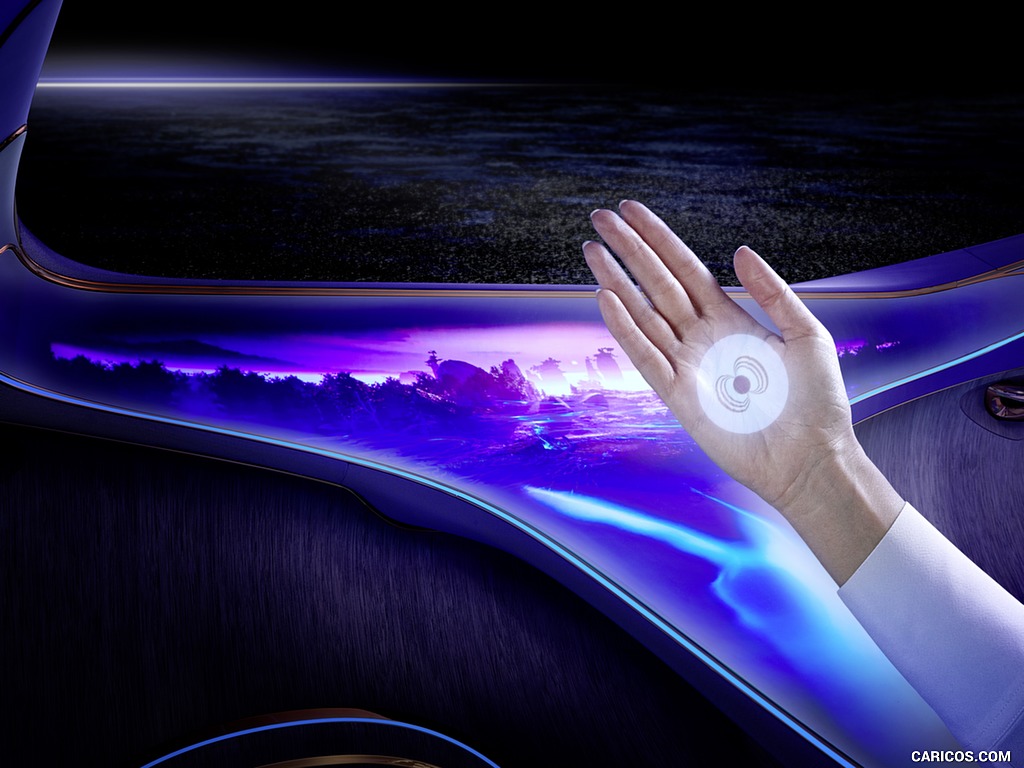 \n
\n
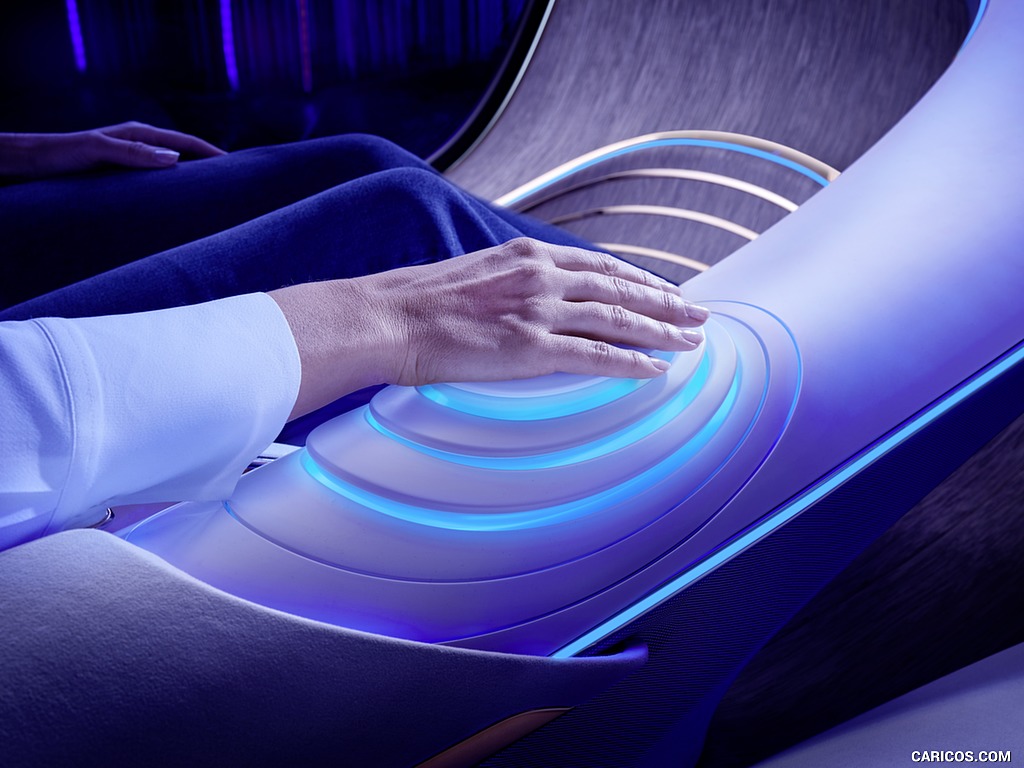 \n
\n
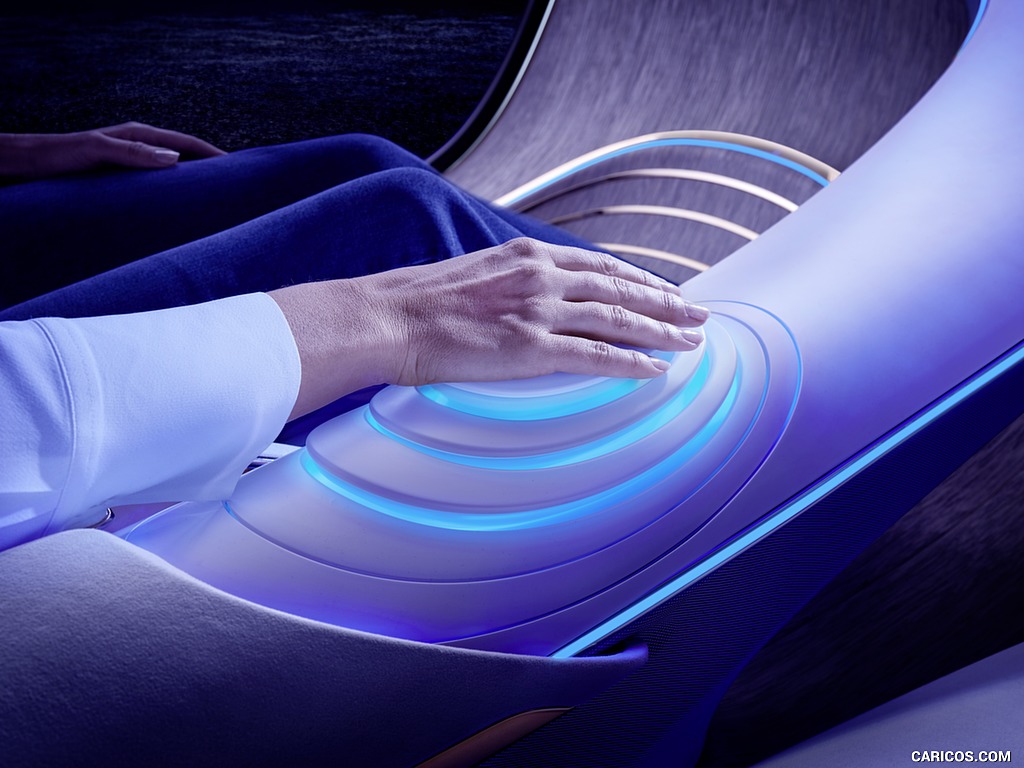 \n
\n
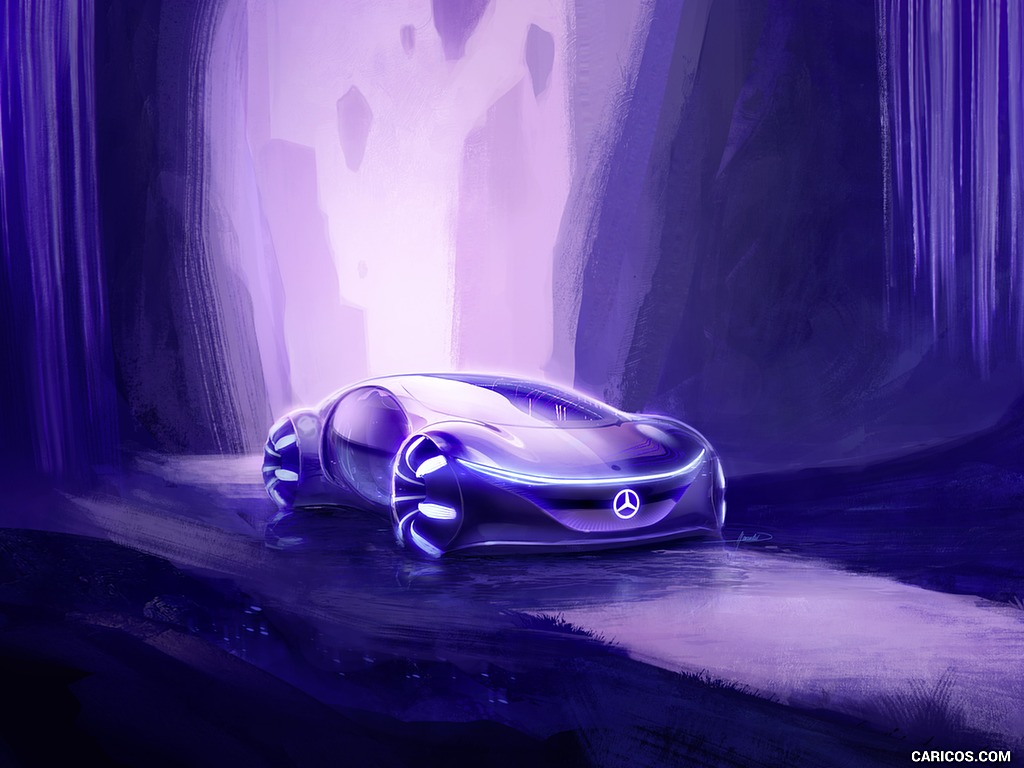 \n
\n
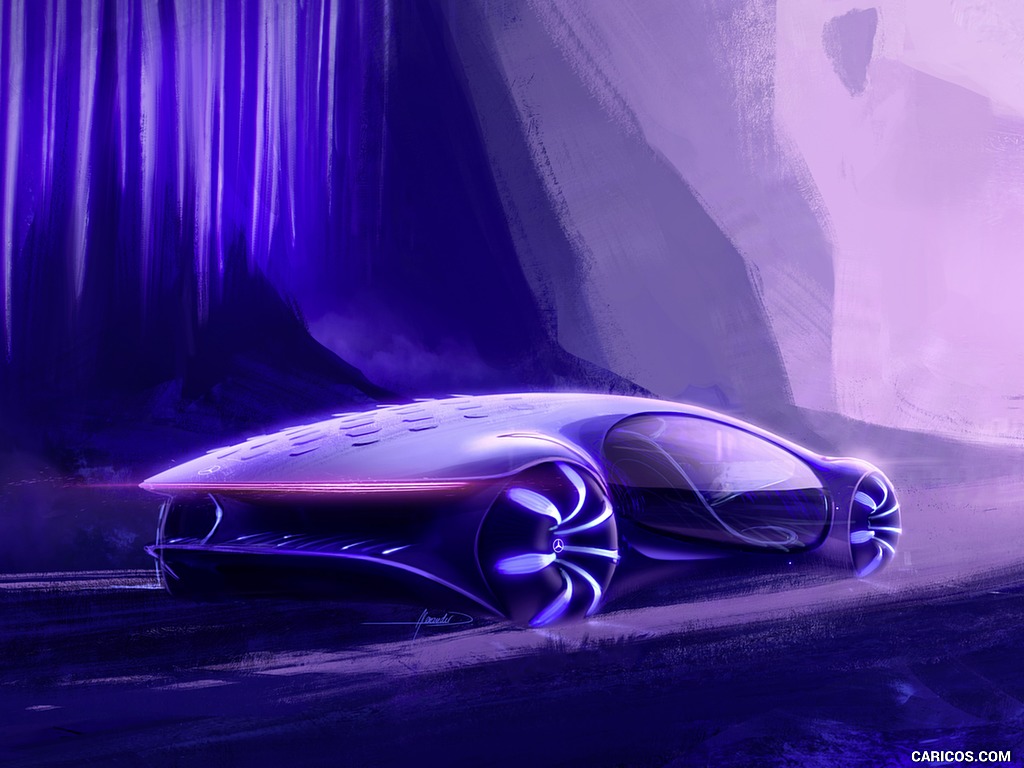 \n
\n
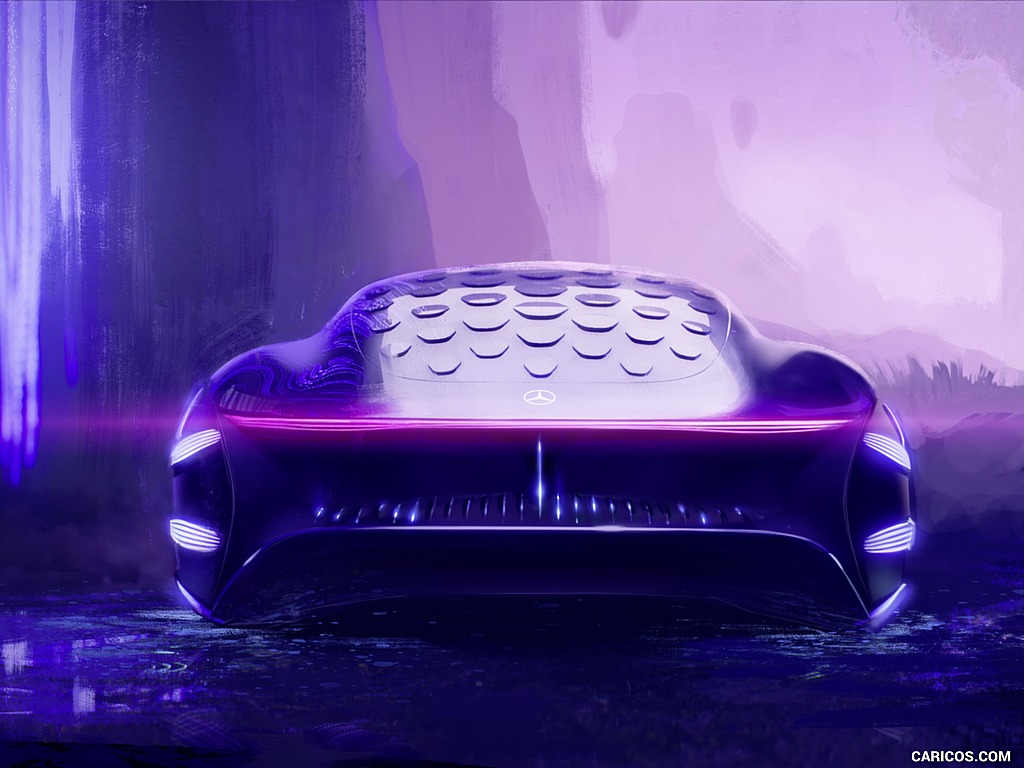 \n
\n
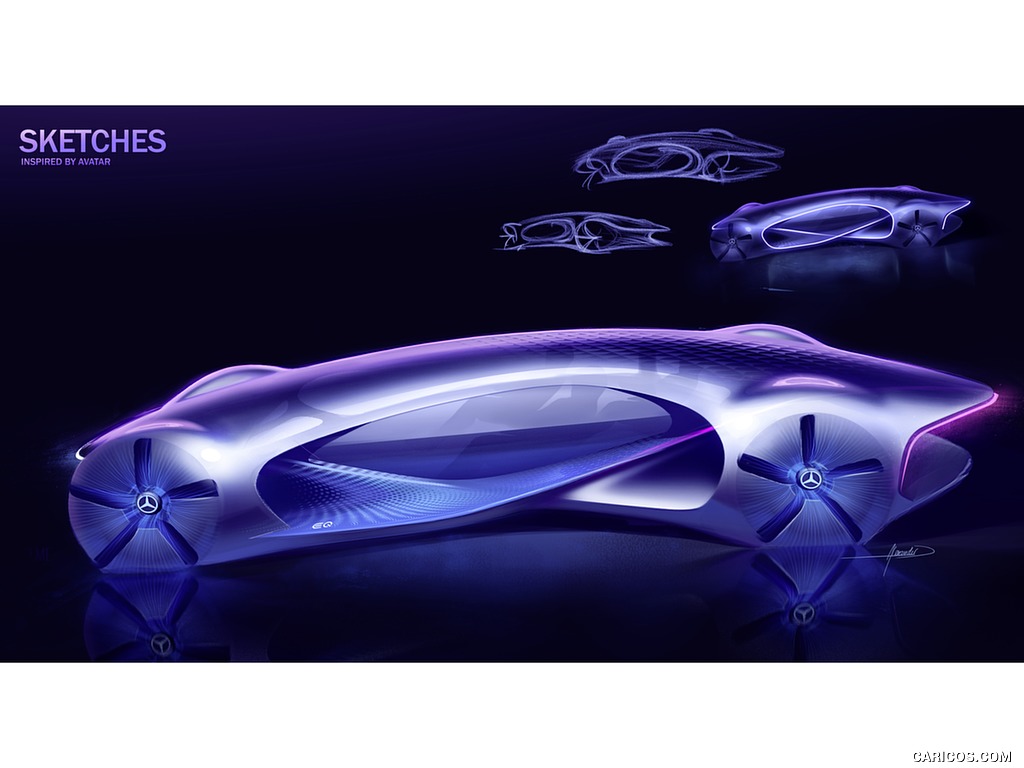 \n
\n
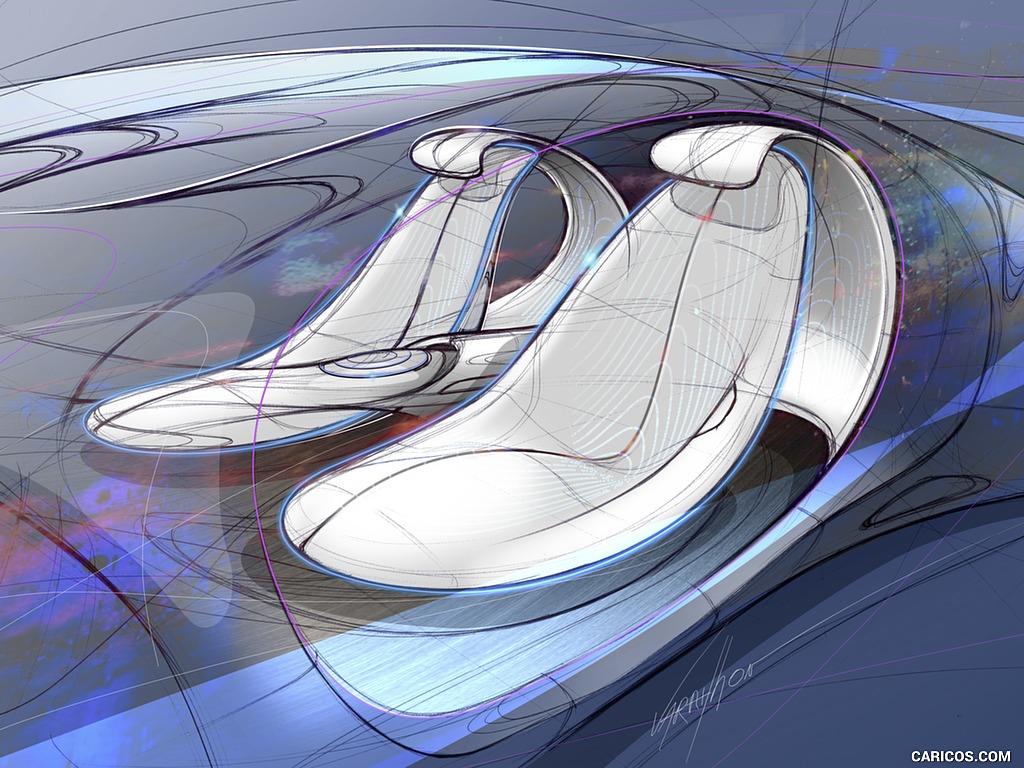 \n
\n
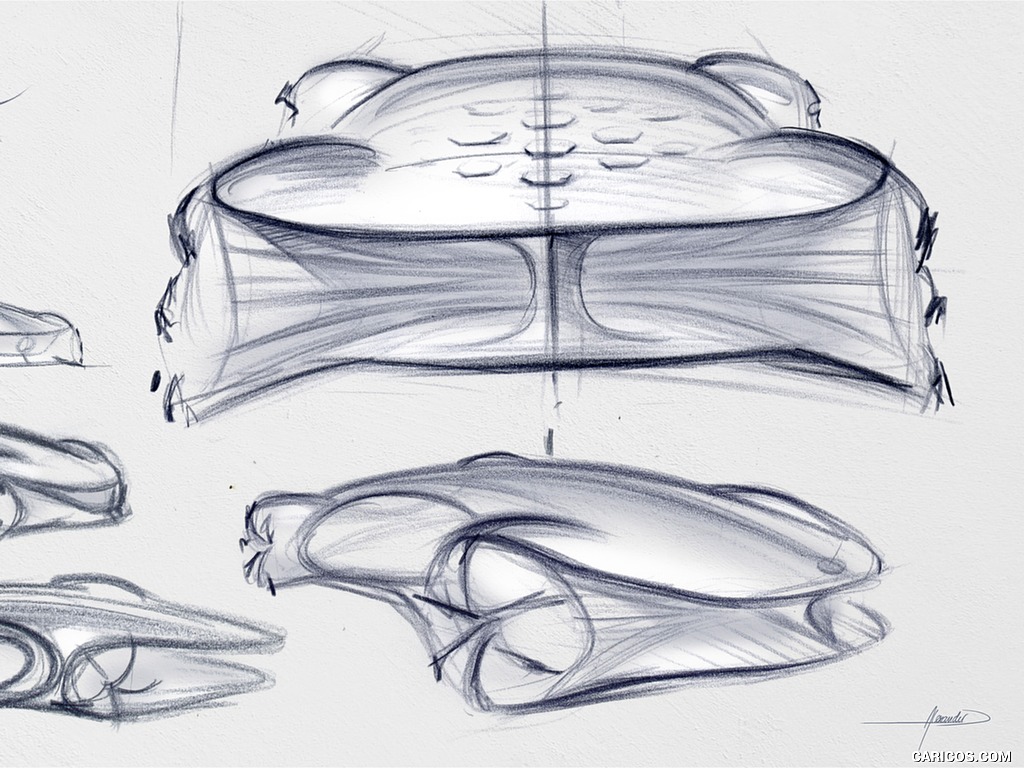 \n
\n
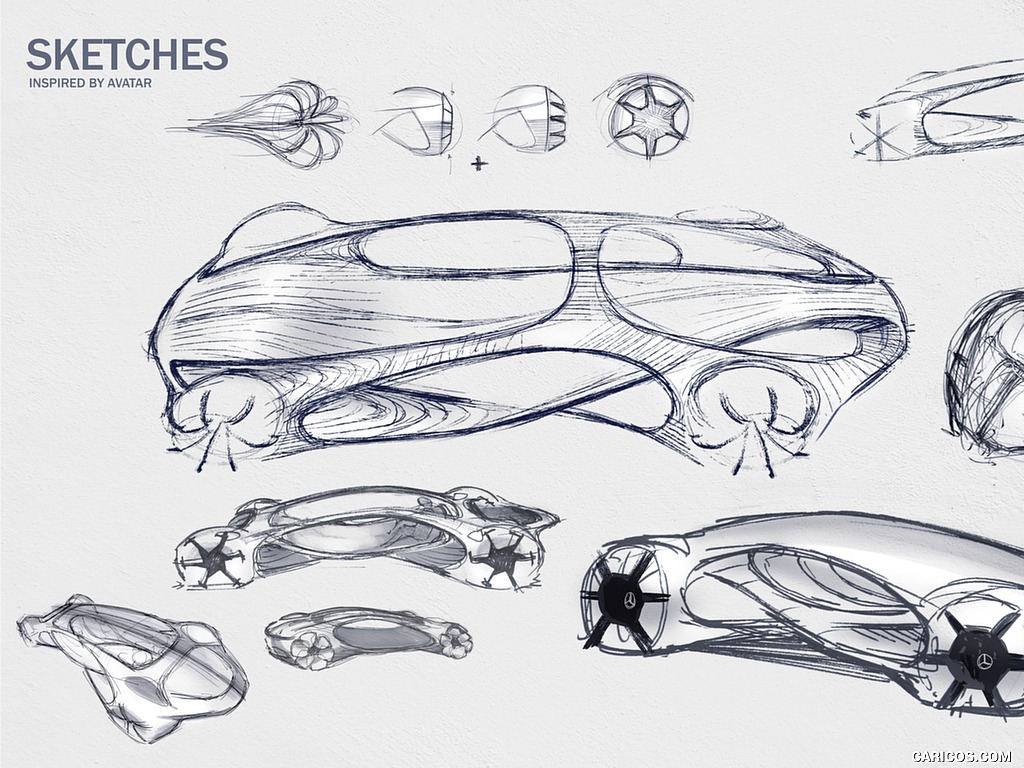 \n
\n
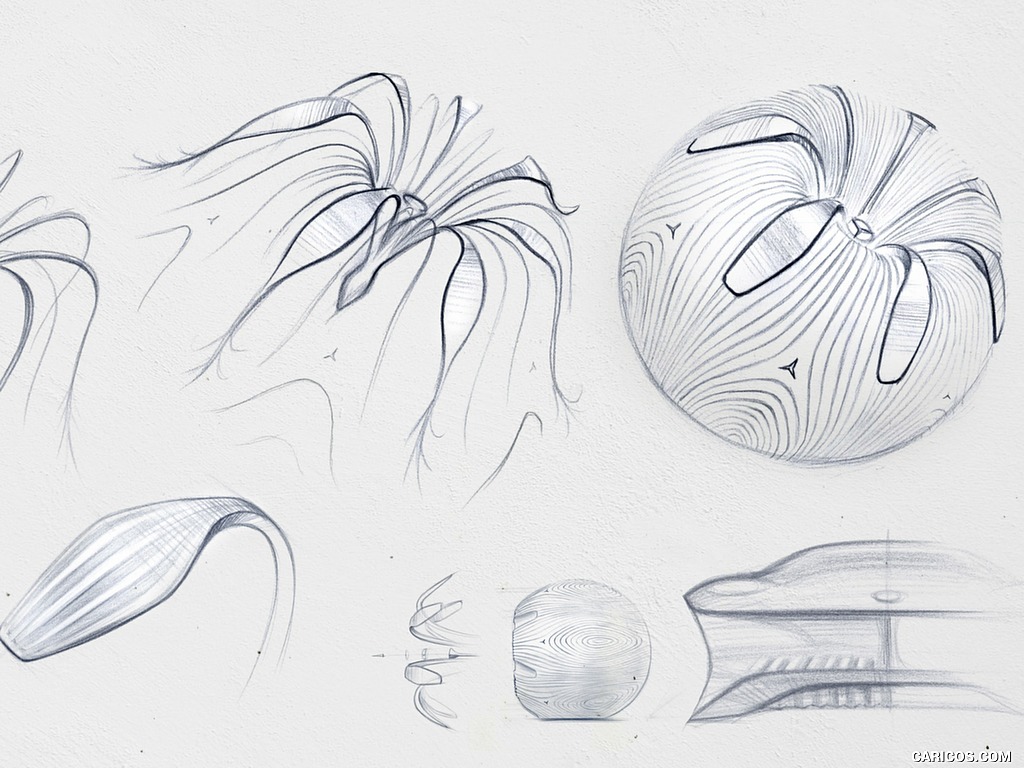 \n
\n
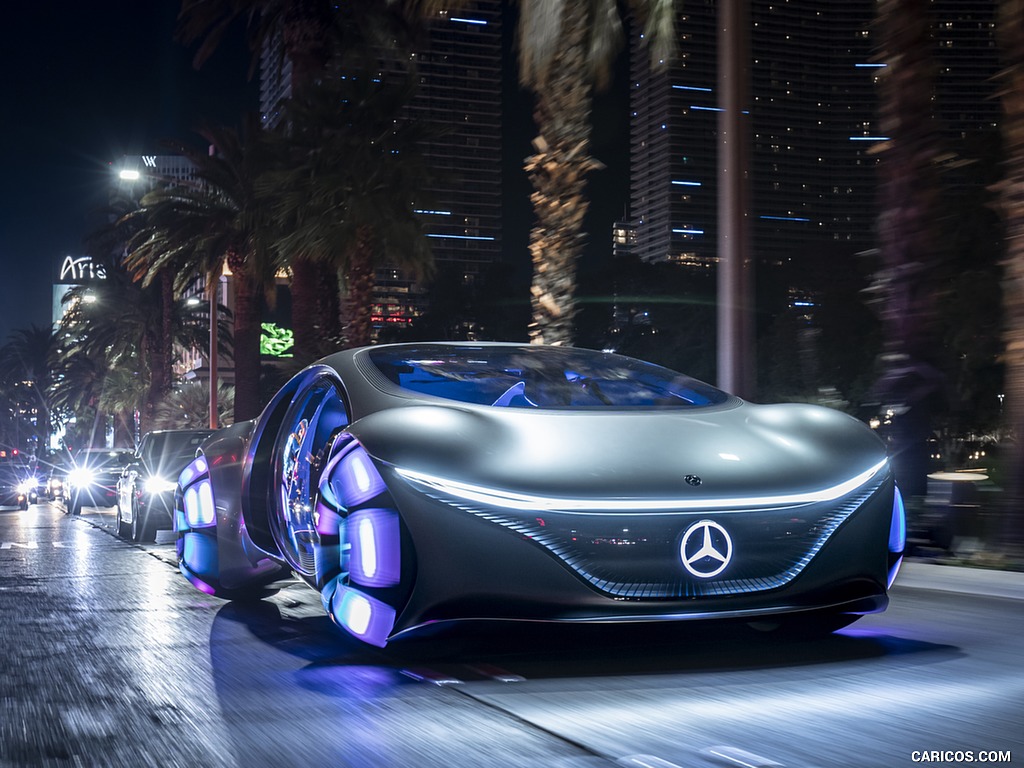 \n
\n
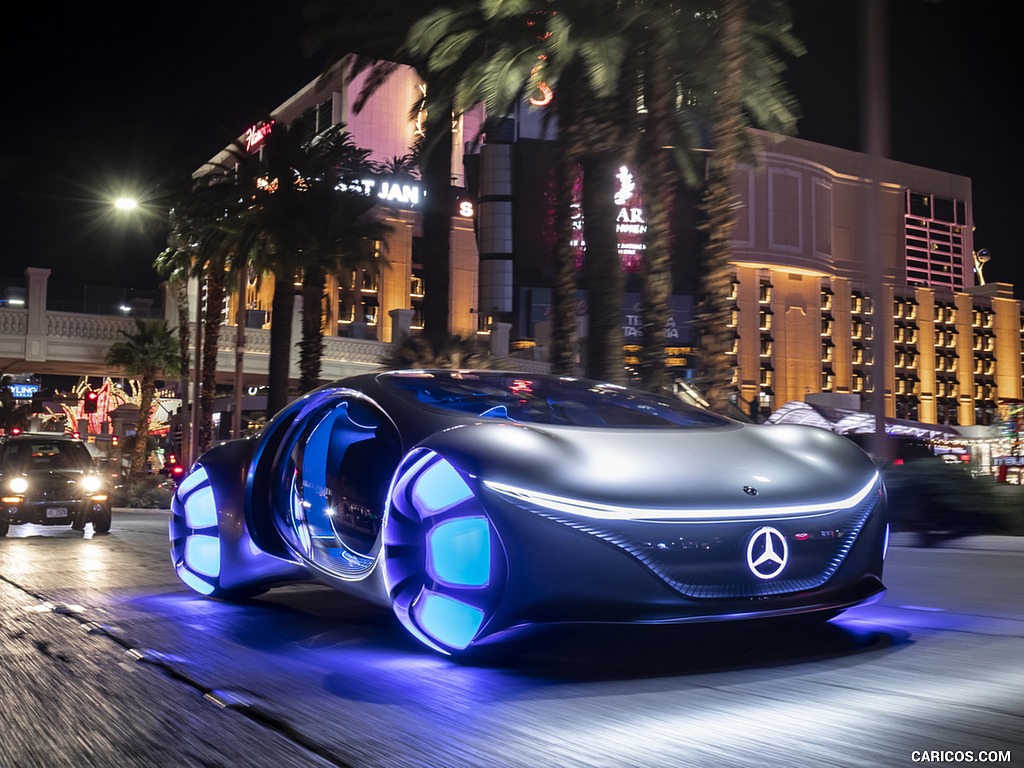 \n
\n
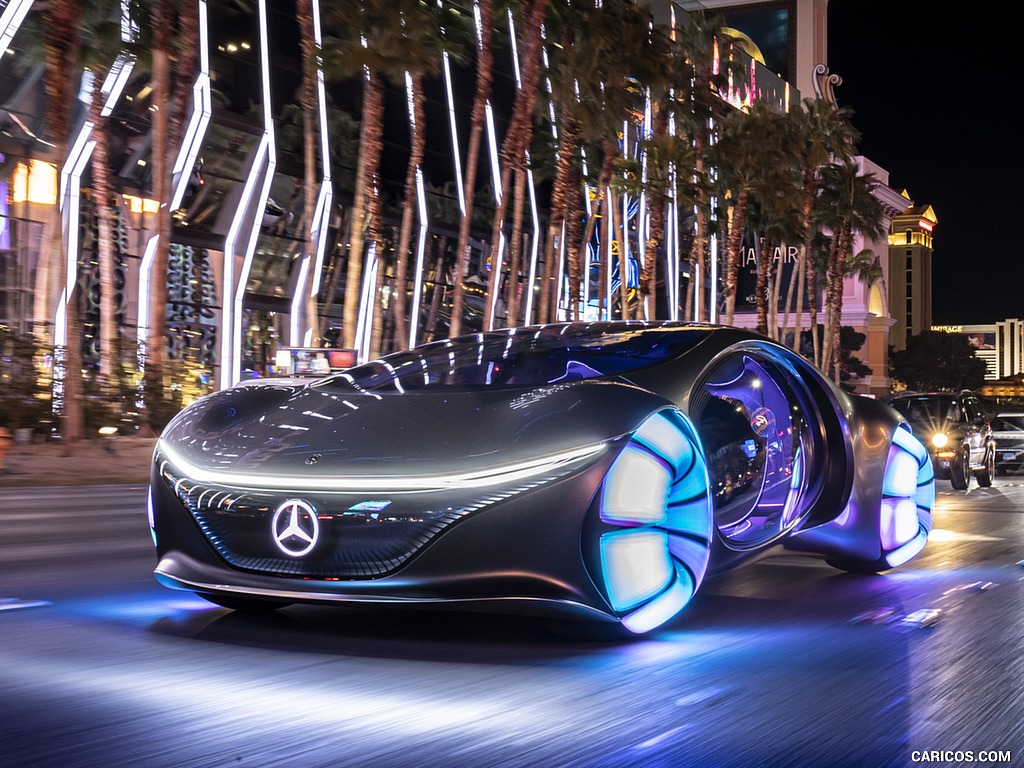 \n
\n
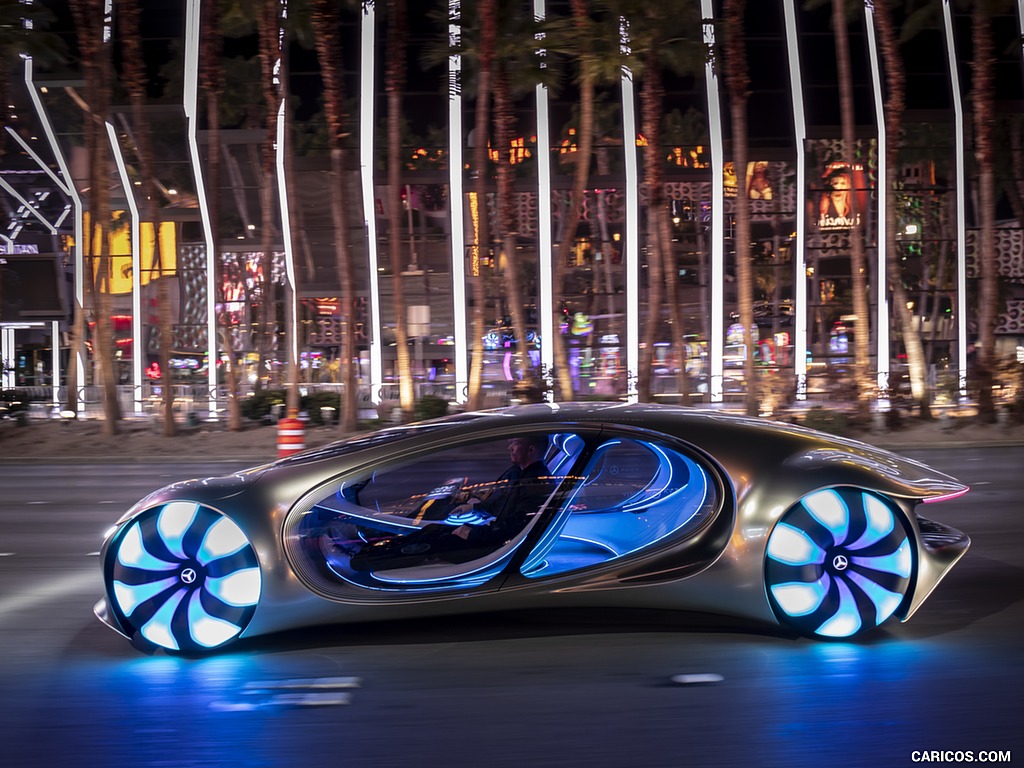 \n
\n
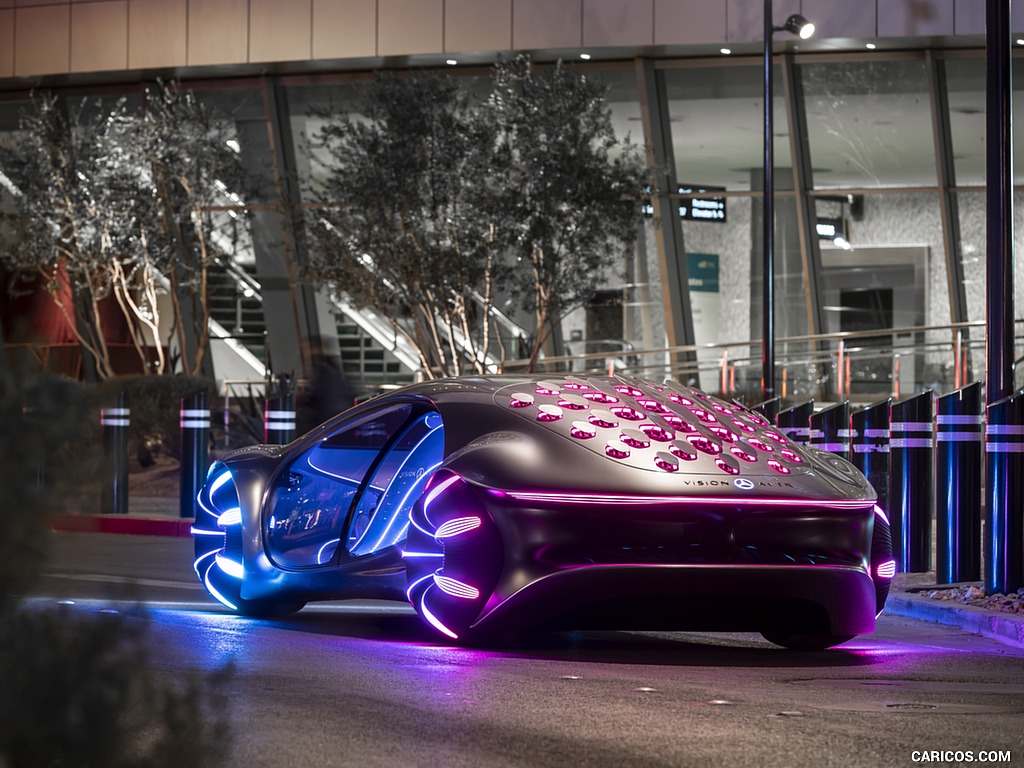 \n
\n
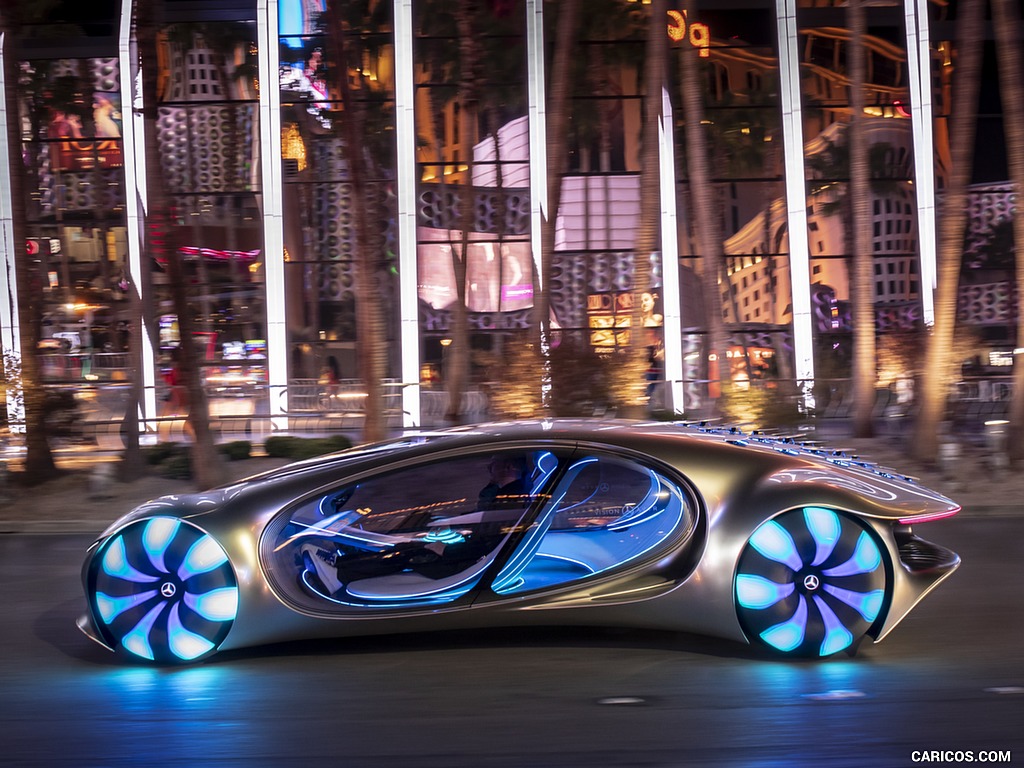 \n
\n
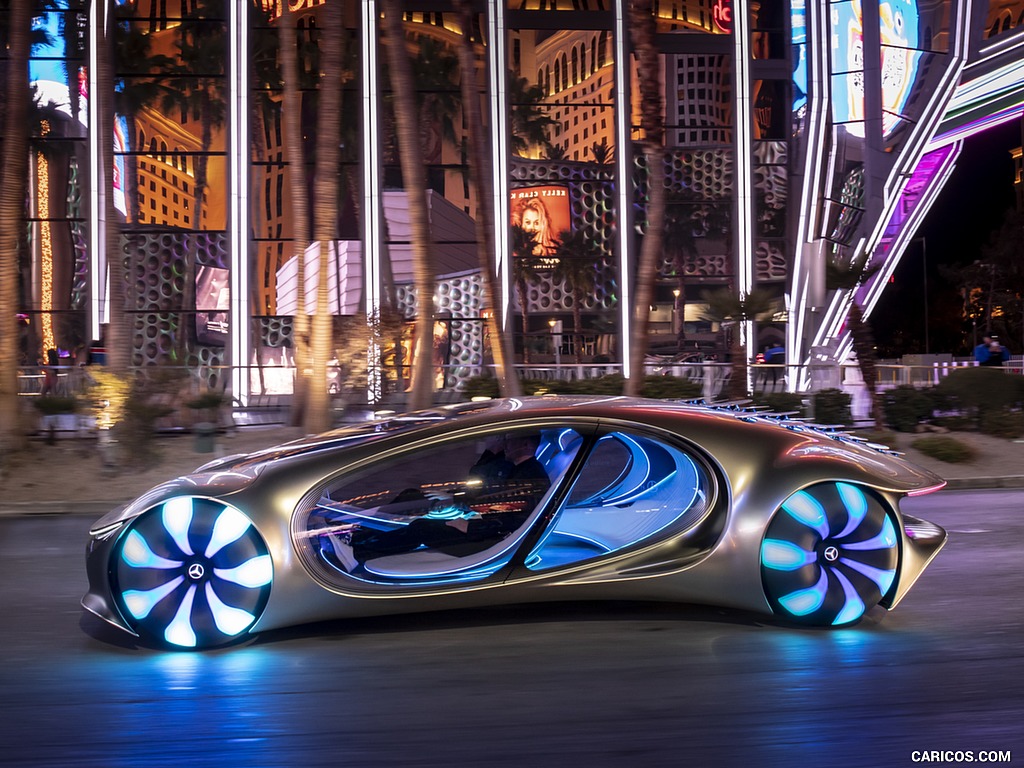 \n
\n
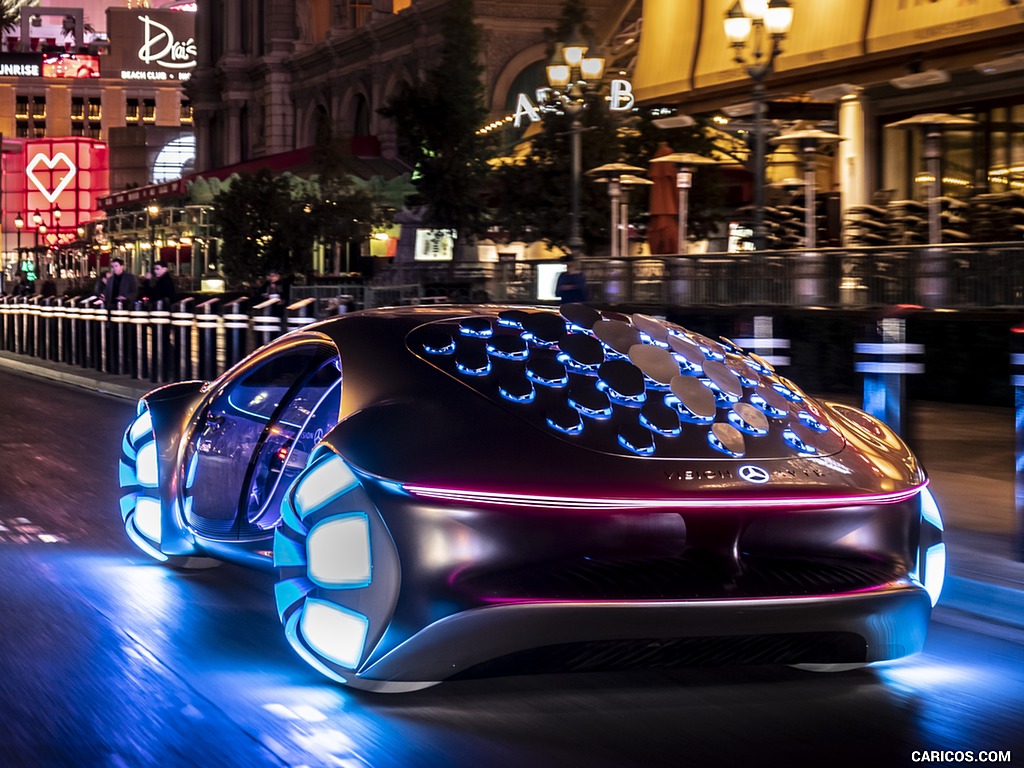 \n
\n
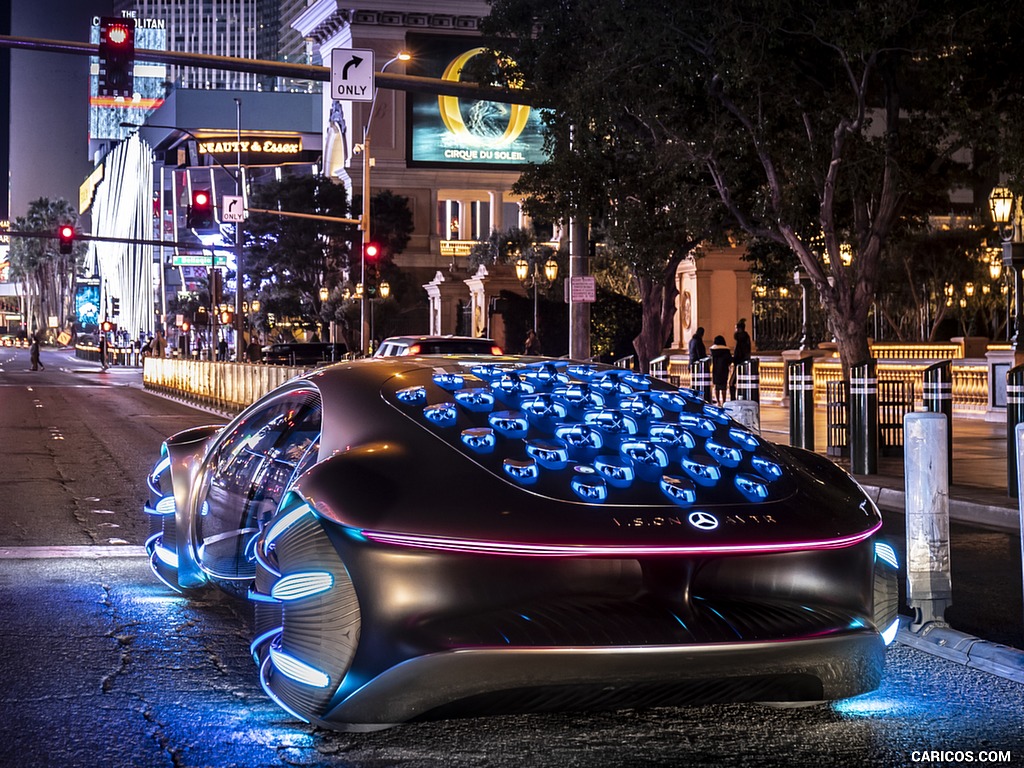 \n
\n
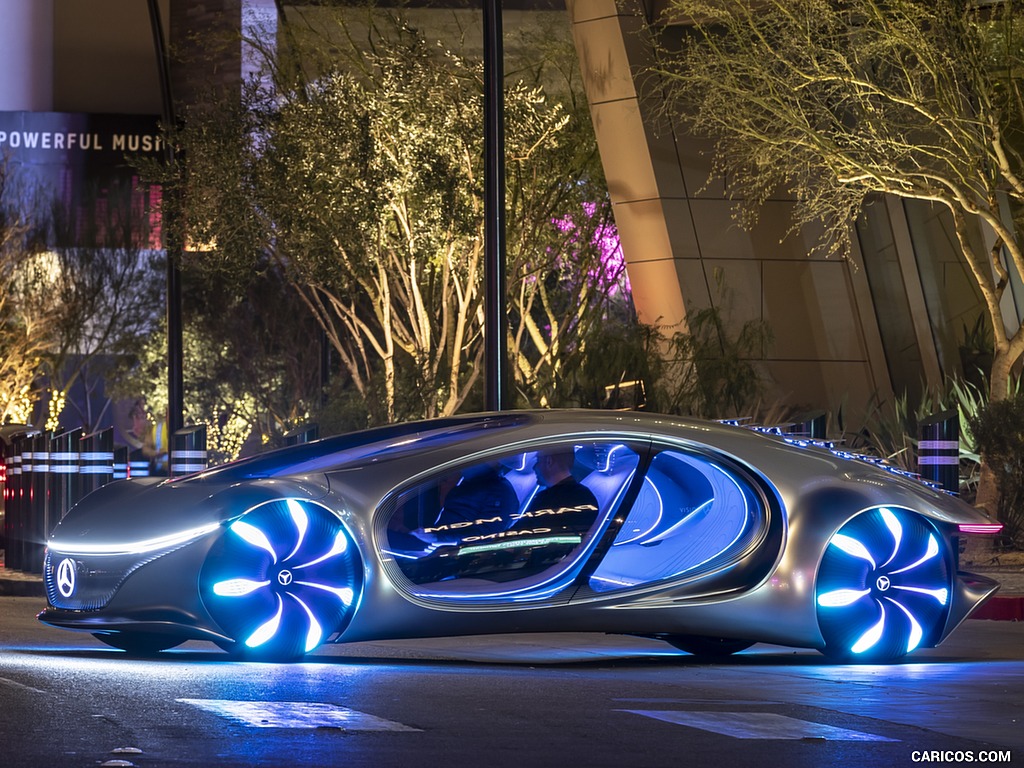 \n
\n
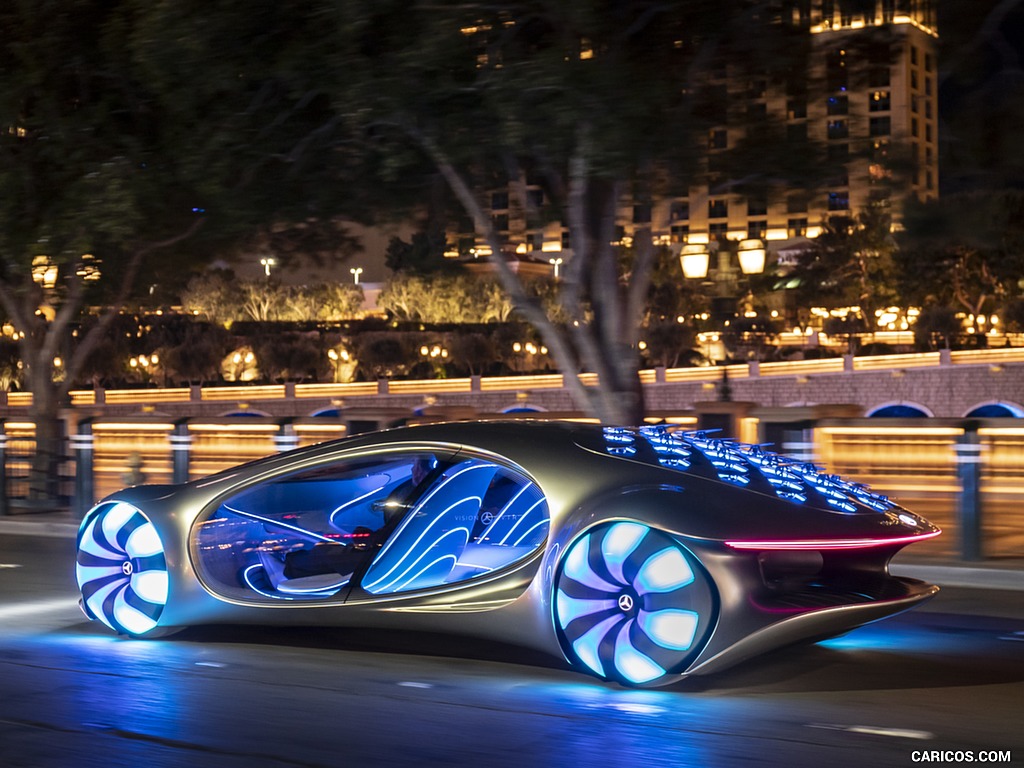 \n
\n
 \n
\n